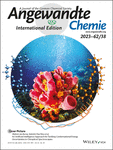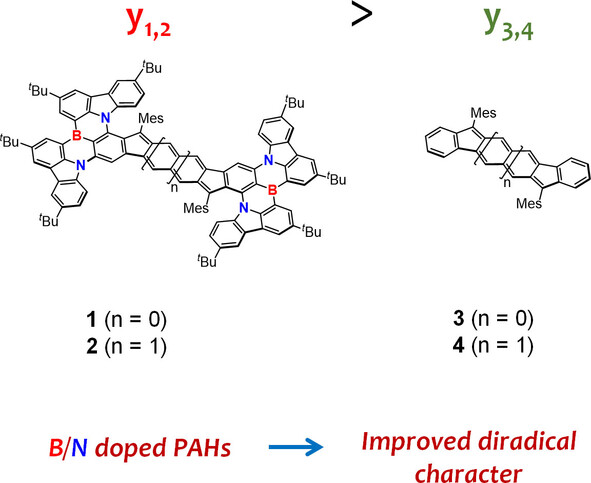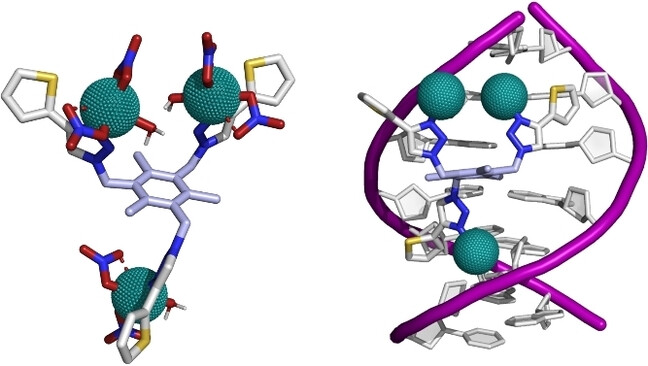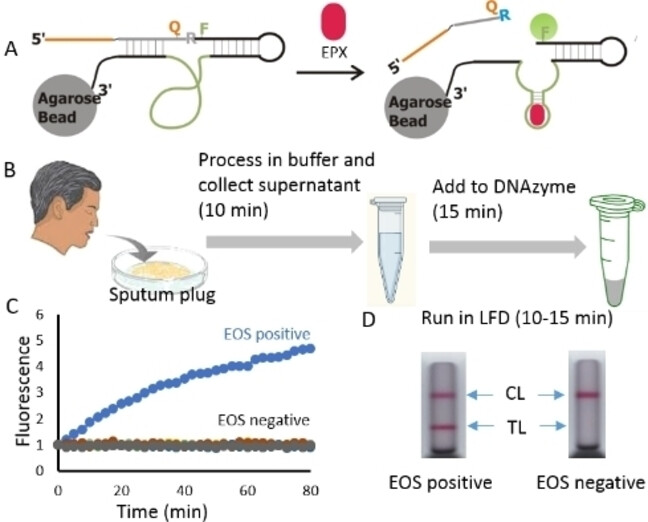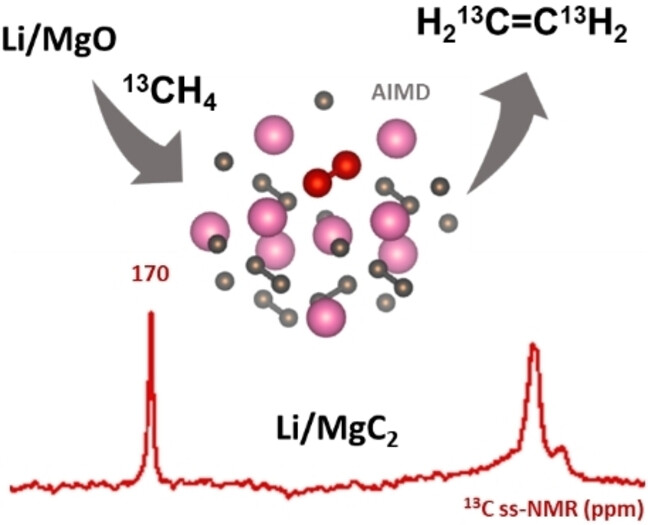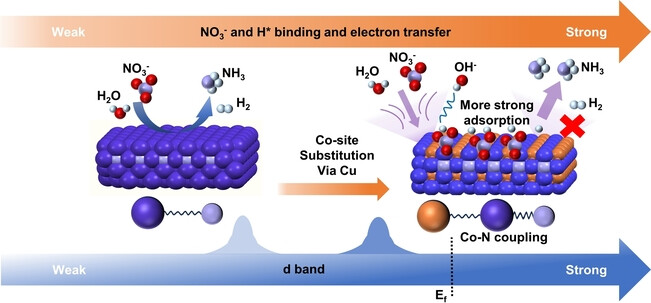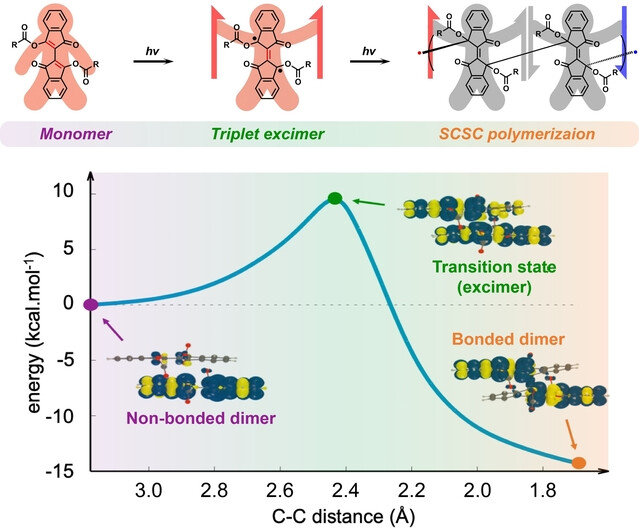Journal list menu
Export Citations
Download PDFs
Covers
Cover Picture: An Artificial Intelligence Approach for Tackling Conformational Energy Uncertainties in Chiroptical Spectroscopies (Angew. Chem. Int. Ed. 38/2023)
- First Published: 01 August 2023
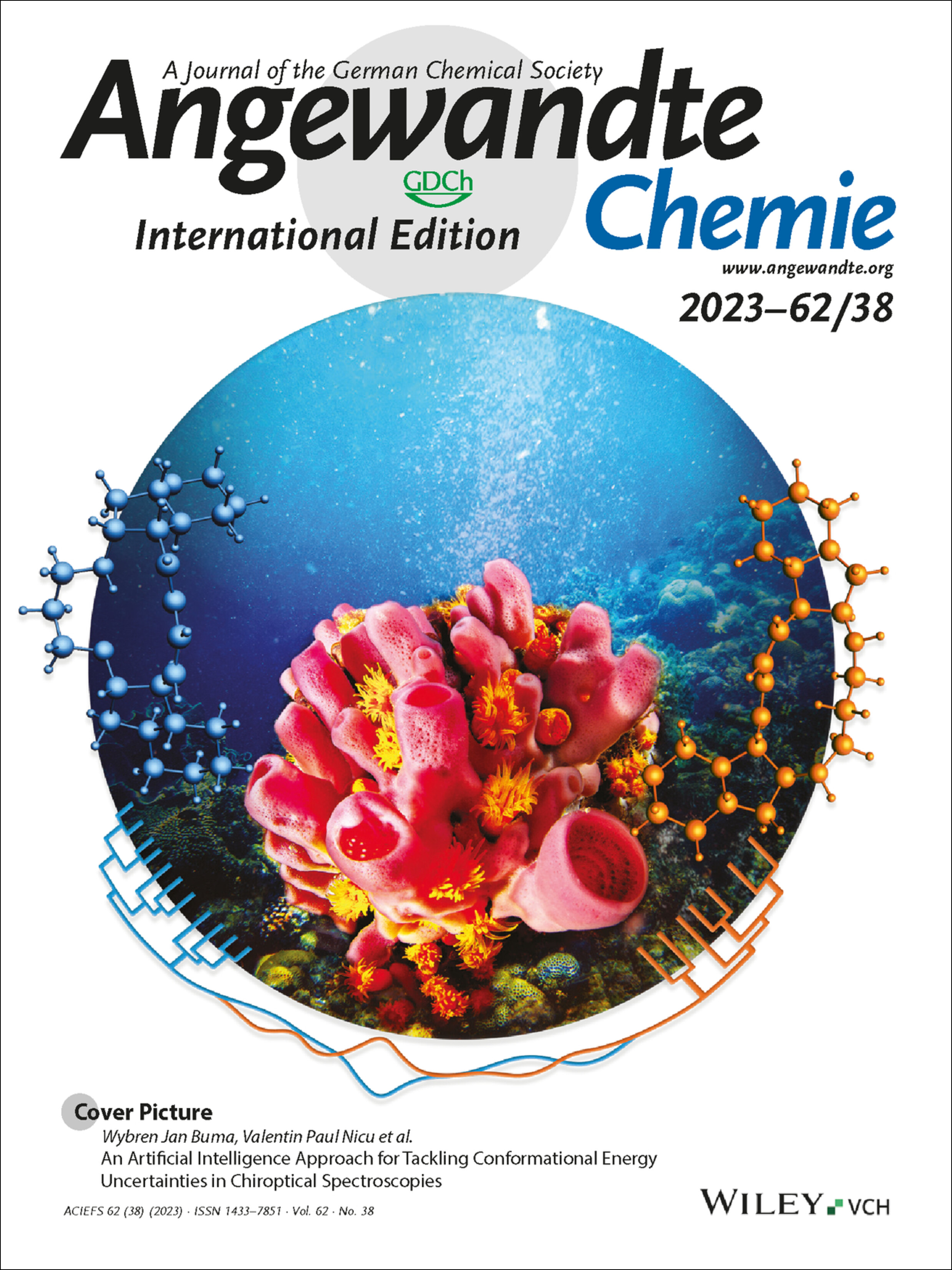
The assignment of the absolute configuration of chiral compounds critically depends on the comparison with predictions of chiroptical spectra with intrinsically inaccurate quantum chemical calculations. Wybren Jan Buma, Valentin Paul Nicu et al. report in their Research Article (e202307053) a novel protocol based on genetic algorithm analyses and hierarchical clustering that overcomes these inaccuracies as demonstrated by the elucidation of the absolute configuration and conformational landscape of natural products derived from the Haliclona sp. marine sponge.
Inside Cover: Engineered Histidine-Rich Peptides Enhance Endosomal Escape for Antibody-Targeted Intracellular Delivery of Functional Proteins (Angew. Chem. Int. Ed. 38/2023)
- First Published: 14 August 2023
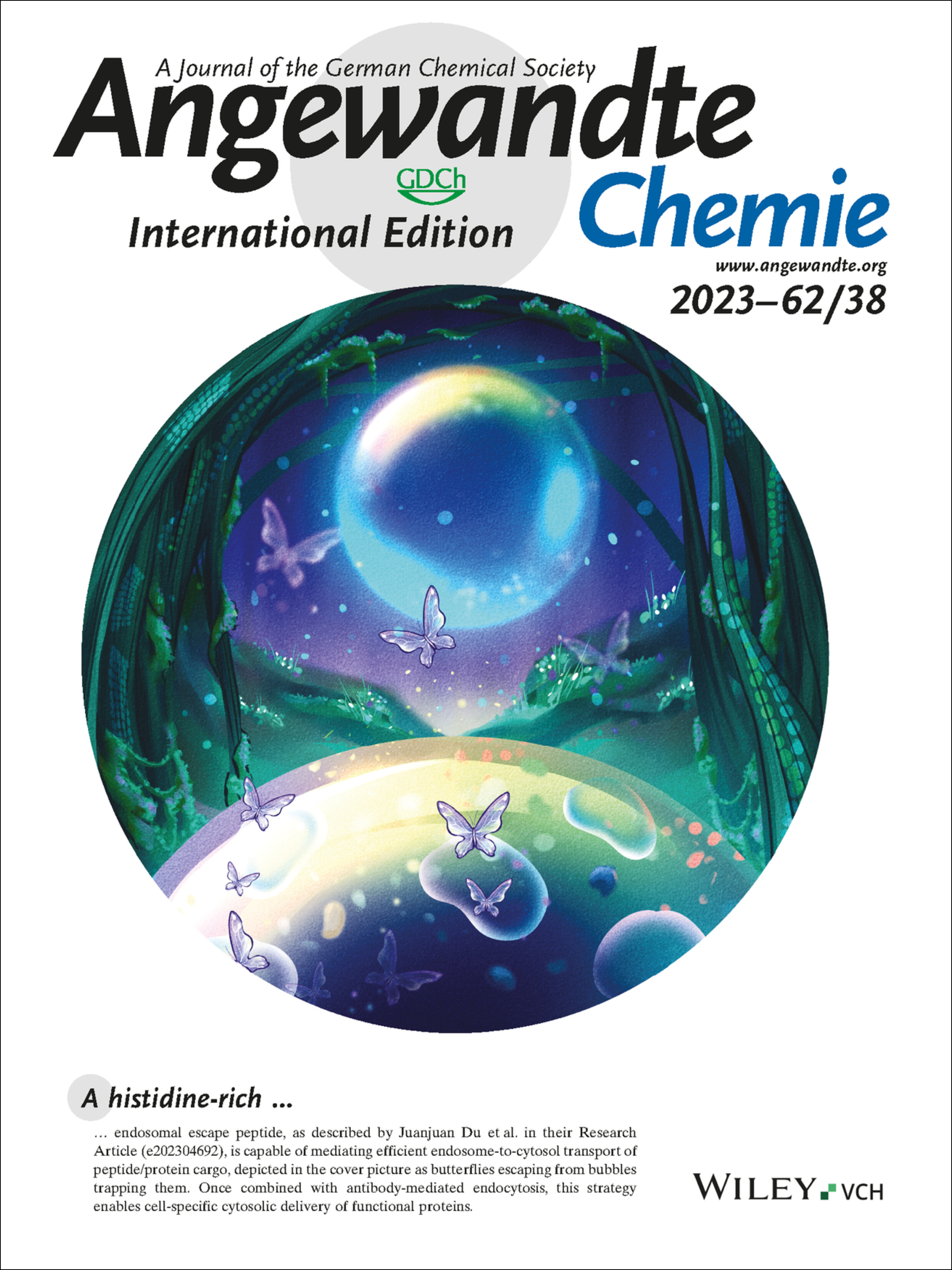
A histidine-rich endosomal escape peptide, as described by Juanjuan Du et al. in their Research Article (e202304692), is capable of mediating efficient endosome-to-cytosol transport of peptide/protein cargo, depicted in the cover picture as butterflies escaping from bubbles trapping them. Once combined with antibody-mediated endocytosis, this strategy enables cell-specific cytosolic delivery of functional proteins.
Inside Back Cover: Binuclear Copper(I) Complexes for Near-Infrared Light-Emitting Electrochemical Cells (Angew. Chem. Int. Ed. 38/2023)
- First Published: 09 August 2023
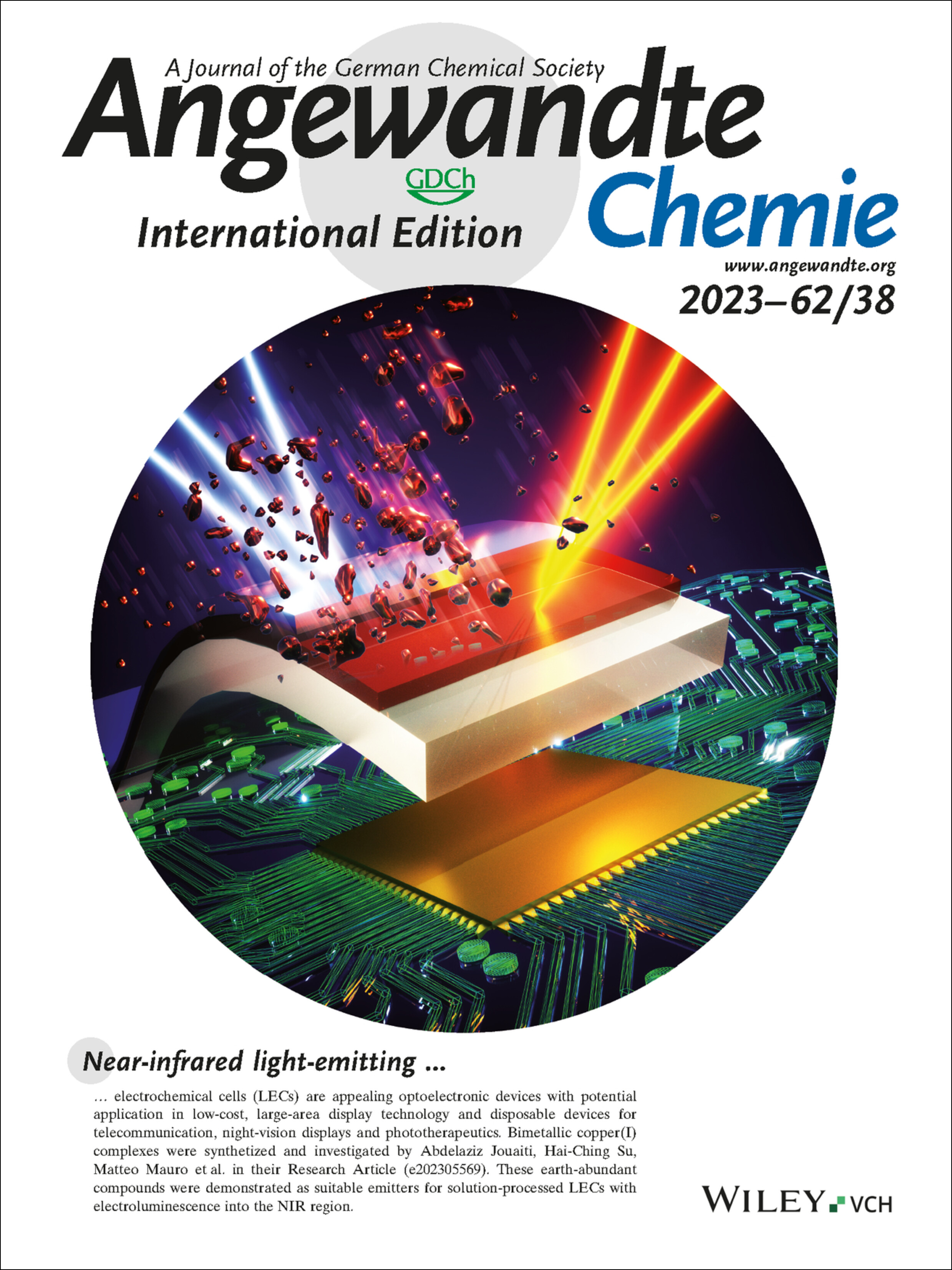
Near-infrared light-emitting electrochemical cells (LECs) are appealing optoelectronic devices with potential application in low-cost, large-area display technology and disposable devices for telecommunication, night-vision displays and phototherapeutics. Bimetallic copper(I) complexes were synthetized and investigated by Abdelaziz Jouaiti, Hai-Ching Su, Matteo Mauro et al. in their Research Article (e202305569). These earth-abundant compounds were demonstrated as suitable emitters for solution-processed LECs with electroluminescence into the NIR region.
Back Cover: A Click Chemistry-Based Artificial Metallo-Nuclease (Angew. Chem. Int. Ed. 38/2023)
- First Published: 03 August 2023
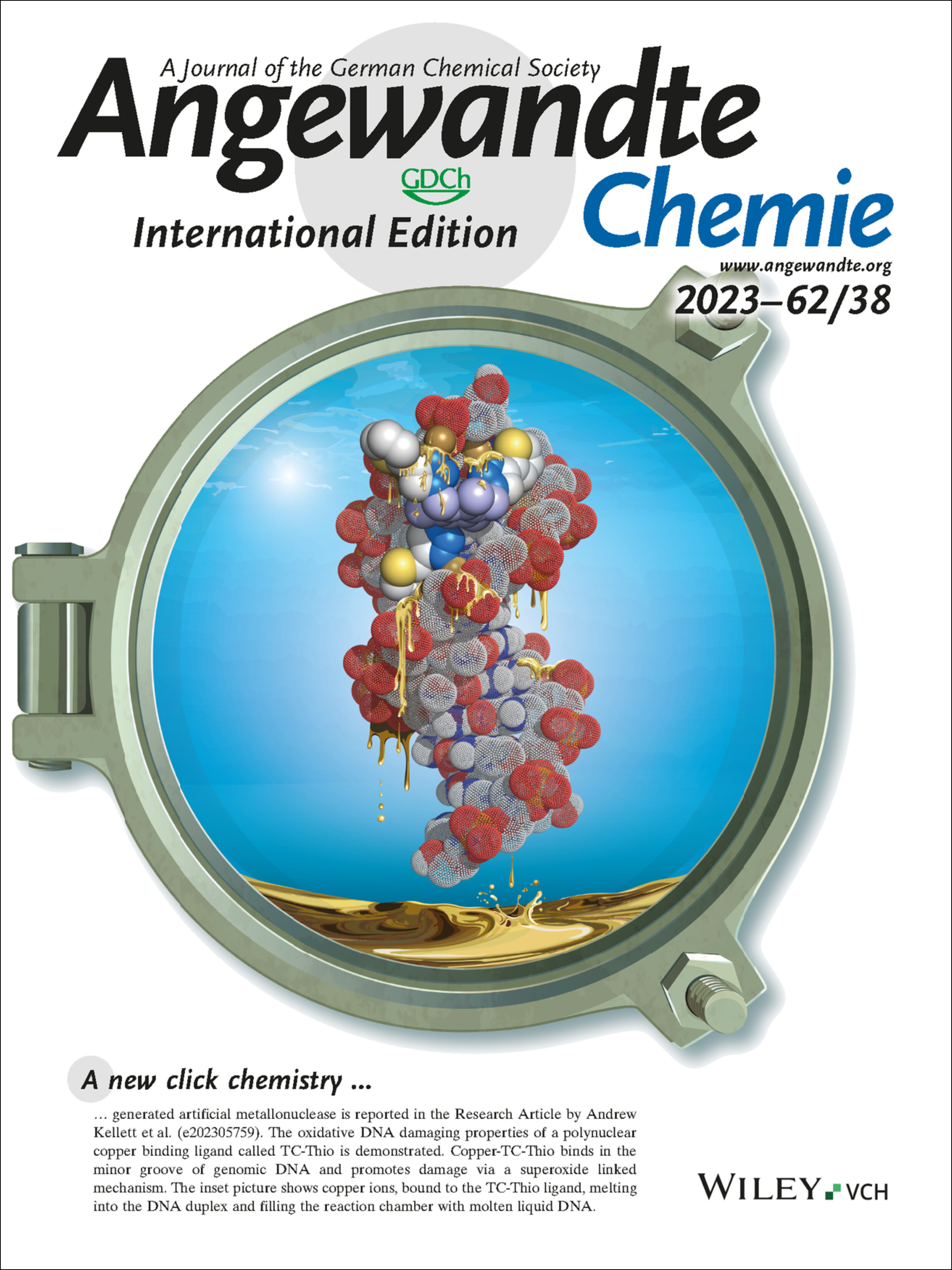
A new click chemistry generated artificial metallonuclease is reported in the Research Article by Andrew Kellett et al. (e202305759). The oxidative DNA damaging properties of a polynuclear copper binding ligand called TC-Thio is demonstrated. Copper-TC-Thio binds in the minor groove of genomic DNA and promotes damage via a superoxide linked mechanism. The inset picture shows copper ions, bound to the TC-Thio ligand, melting into the DNA duplex and filling the reaction chamber with molten liquid DNA.
Frontispiece
Frontispiece: The Power of Kinetic Inertness in Improving Platinum Anticancer Therapy by Circumventing Resistance and Ameliorating Nephrotoxicity
- First Published: 14 September 2023
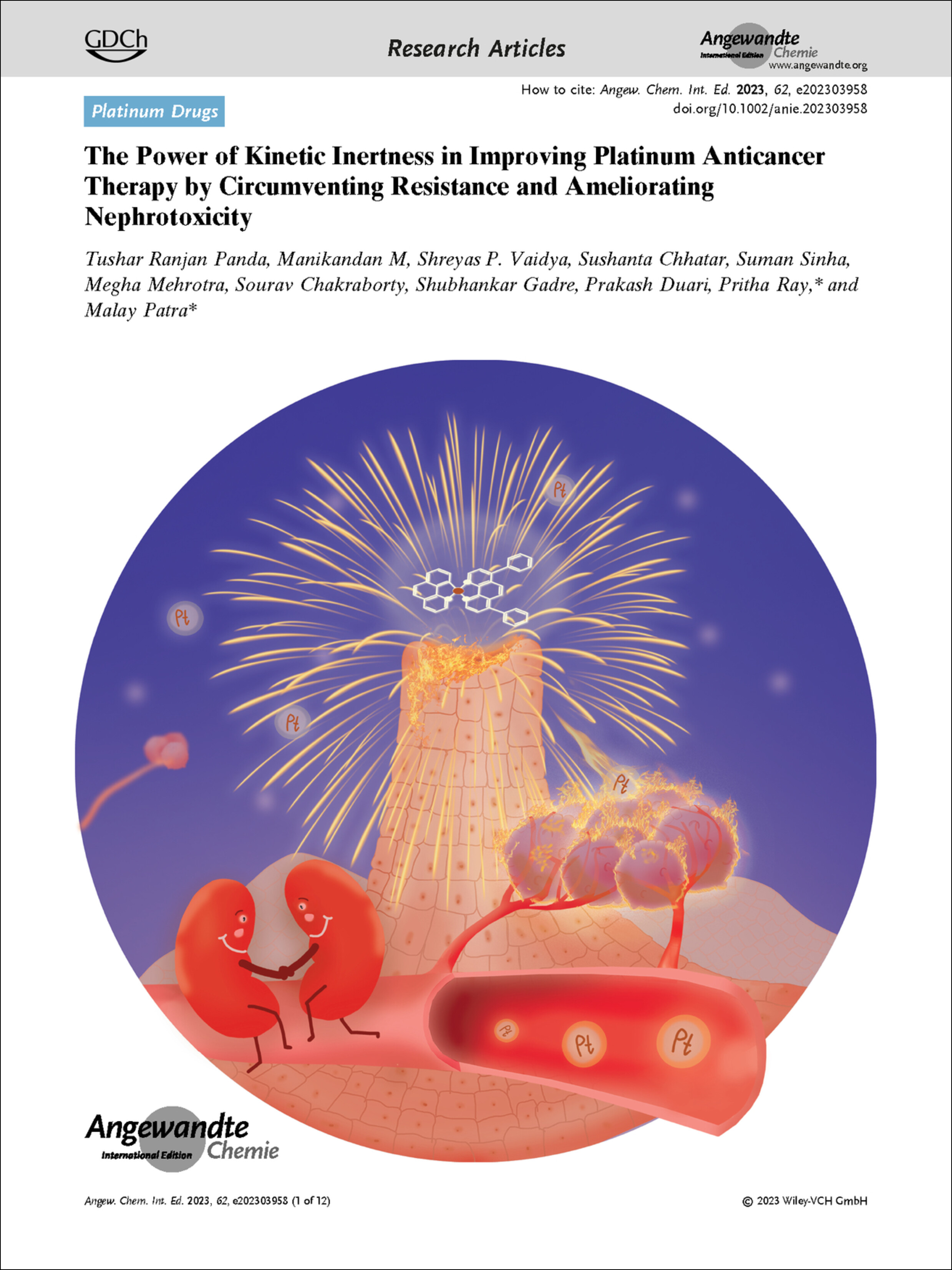
Antitumor Agents. In their Research Article (e202303958), Pritha Ray, Malay Patra et al. report the design and synthesis of an in vivo potent, kinetically inert platinum organometallic antitumor agent.
Frontispiece: Fused Indacene Dimers
- First Published: 14 September 2023
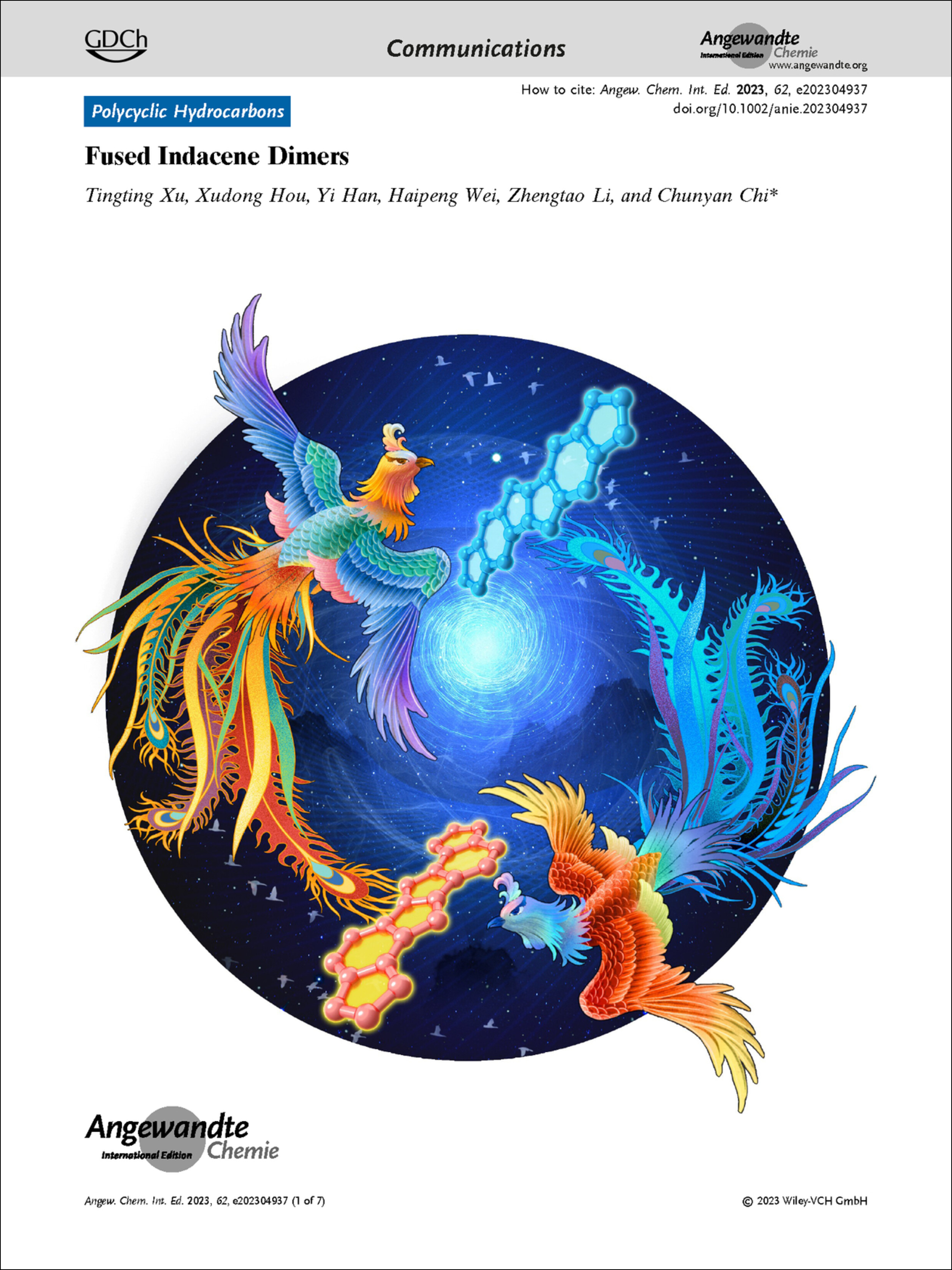
Polycyclic Hydrocarbons. In their Communication (e202304937), Chunyan Chi et al. report the synthesis and isolation in single-crystal form of two fused indacene dimer isomers. Both isomers display an open-shell singlet ground state.
Graphical Abstract
Graphical Abstract: Angew. Chem. Int. Ed. 38/2023
- First Published: 14 September 2023
Announcement
Classifieds: Jobs and Awards, Products and Services
- First Published: 14 September 2023
Team Profile
Persuading the Non-canonical Intercalated-Motif DNA to Reveal Its Structure
- First Published: 26 July 2023

“A great surprise was that out of the 20 base pairs in the iHRAS dimer, only two are canonical … One hurdle in the iHRAS journey was coordinating studentsâ research efforts across multiple years. Research is not a full-time job for undergraduates. And even the most dedicated students typically spend only two or three years in the lab…” Find out more about the collaborative work in the Yatsunyk and Schneekloth Labs.
Introducing …
De-Wei Gao
- First Published: 01 August 2023

“The most exciting thing about my research is that students can achieve 99 % yield and 99 % ee … If I were stranded on a desert island and could have only one book, I would choose Romance of the Three Kingdoms by Guanzhong Luo, since it is very entertaining.” Find out more about De-Wei Gao in his Introducing … Profile.
Beñat Artetxe
- First Published: 01 August 2023

“I celebrate success by going out for a drink with my friends … When I want to treat myself to something, I cook something special for dinner. My txipirones en su tinta (a traditional Basque dish consisting of “squids in their own ink”) are tasty! …” Find out more about Beñat Artetxe in his Introducing … Profile.
Highlights
Polycyclic Hydrocarbons
Design Strategies for Diradical Boron/Nitrogen Doped Carbon-Based Materials
- First Published: 14 July 2023
Minireviews
Metabolism
The Metabolostasis Network and the Cellular Depository of Aggregation-Prone Metabolites
- First Published: 02 June 2023
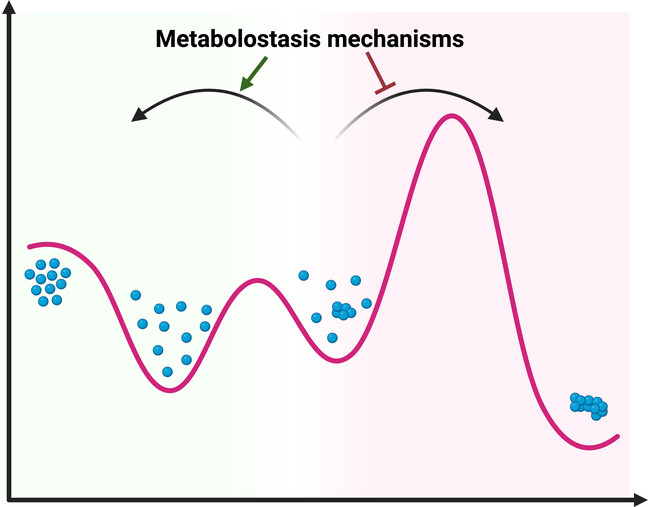
Metabolites are essential building blocks required for cellular function. Yet, like proteins, they tend to form toxic aggregates. Here, we expand the resemblance between protein and metabolite self-assembly, discussing the metastability of the soluble state of the latter. We suggest that a quality-control network, termed “metabolostasis”, has evolved to regulate the storage and retrieval of aggregation-prone metabolites and prevent disease onset.
Perovskites
Perovskite Scintillators for Improved X-ray Detection and Imaging
- First Published: 31 May 2023
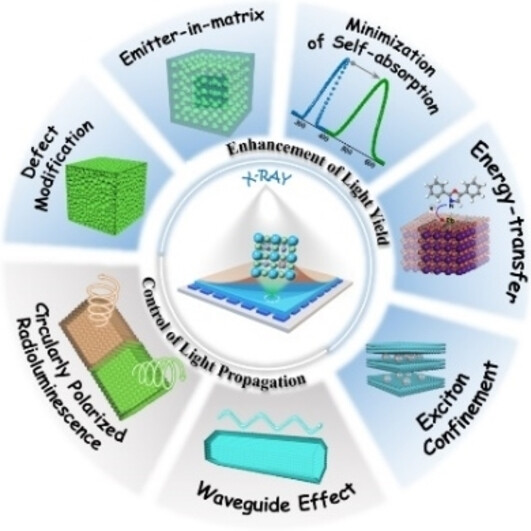
Halide perovskites have emerged as competitive scintillators for X-ray detection and imaging owing to their intrinsic characteristics. This minireview summarizes strategies for improving the light yield of halide perovskite scintillators and offers a roadmap for advancing the X-ray imaging performance. Additionally, methods for controlling the light propagation direction in halide perovskite scintillators are highlighted for improving X-ray imaging resolution.
Reviews
Electrocatalysis
Recent Progress on Electrode Design for Efficient Electrochemical Valorisation of CO2, O2, and N2
- First Published: 28 May 2023
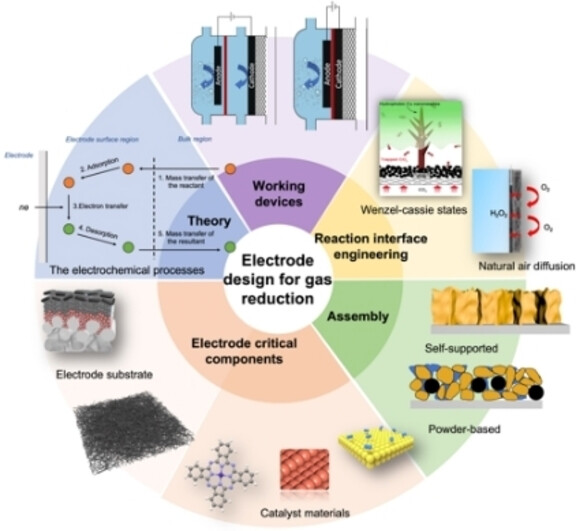
Electrode design is key to developing electrochemical gas reduction reactions for sustainable production of high-value chemicals. This review examines the present challenges in electrode design, proposes a desirable electrode that mitigates the challenges, and provides practical solutions to construct such an electrode based on recent research.
Carbohydrates
Diversification of Glycosyl Compounds via Glycosyl Radicals
- First Published: 06 June 2023
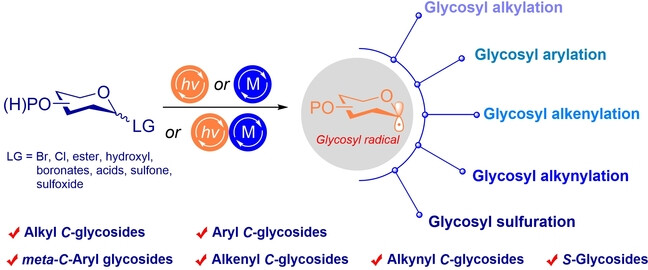
Glycosyl radical diversification has emerged as one of the most powerful approaches to access various categories of valuable glycosyl compounds. Advances in metal-catalyzed cross-coupling and metallaphotoredox catalysis offer new avenues for constructing these sugar molecules with high efficiency and stereoselectivity. A summary of the most recent developments in glycosyl radical functionalization methods for carbohydrate synthesis is highlighted in this Review.
Research Articles
Platinum Drugs
The Power of Kinetic Inertness in Improving Platinum Anticancer Therapy by Circumventing Resistance and Ameliorating Nephrotoxicity
- First Published: 14 June 2023
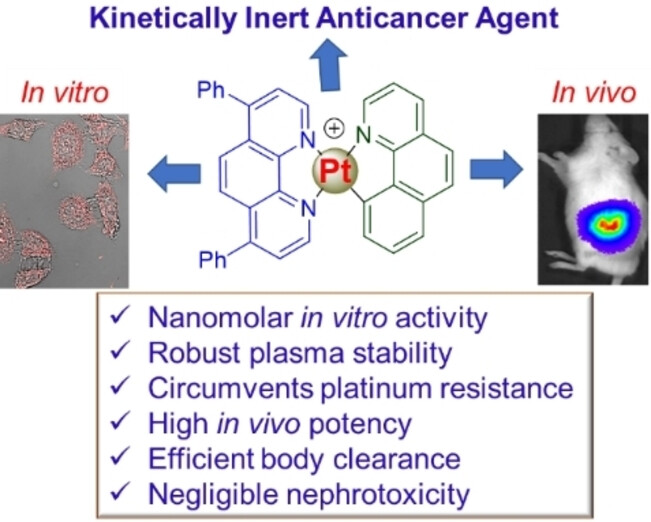
A kinetically inert platinum organometallic antitumor agent that is remarkably potent in vivo was designed and synthesized. Using a combination of in vitro and in vivo assays, the authors demonstrate the power of kinetic inertness in improving the therapeutic benefits of platinum-based anticancer chemotherapy by overcoming platinum resistance and ameliorating nephrotoxicity.
Protein Delivery | Hot Paper
Engineered Histidine-Rich Peptides Enhance Endosomal Escape for Antibody-Targeted Intracellular Delivery of Functional Proteins
- First Published: 07 June 2023
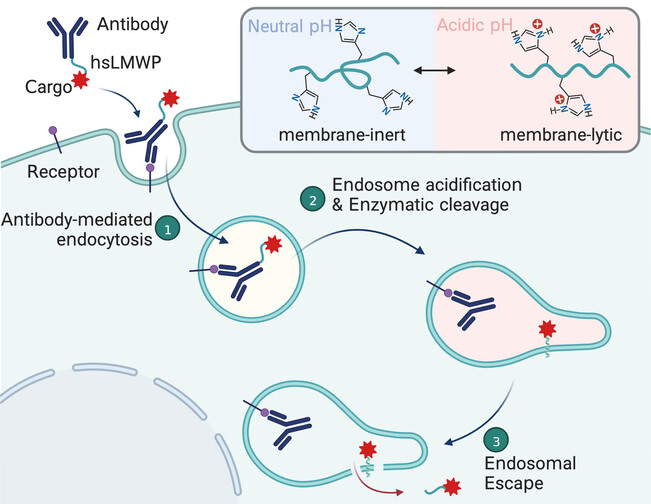
A new strategy has been developed to design and construct endosomal escape peptides. By substituting the Arg/Lys residues in cationic cell-penetrating peptides (CPPs) with histidine, peptides with pH-dependent membrane-perturbation activity have been obtained. These peptides can mediate the endosomal escape of peptide/protein cargoes upon antibody-targeted delivery, allowing potential applications such as protein delivery and gene editing.
Mesoporous Materials | Hot Paper
Gradually Tuning the Flexibility of Two-Dimensional Covalent Organic Frameworks via Stepwise Structural Transformation and Their Flexibility-Dependent Properties
- First Published: 26 July 2023
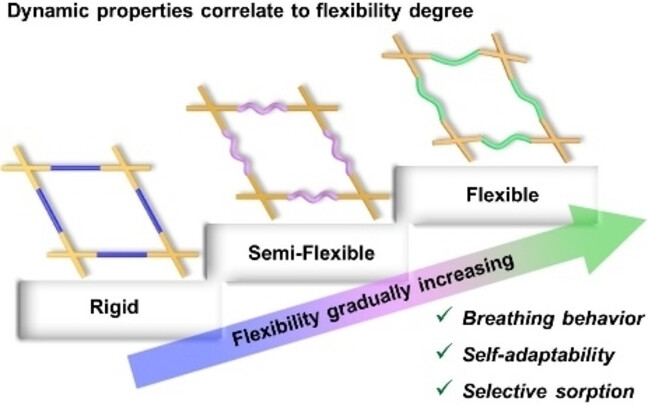
Through the combination of linker exchange and linkage conversion strategies, we have achieved the regulation of flexibility of two-dimensional covalent organic frameworks (COFs) and revealed the impact of different flexibility degree on properties of COFs, including breathing behavior, self-adaptability, and selective gas sorption.
Photocatalysis | Hot Paper
Photocatalyzed Borylcyclopropanation of Alkenes with a (Diborylmethyl)iodide Reagent
- First Published: 01 August 2023
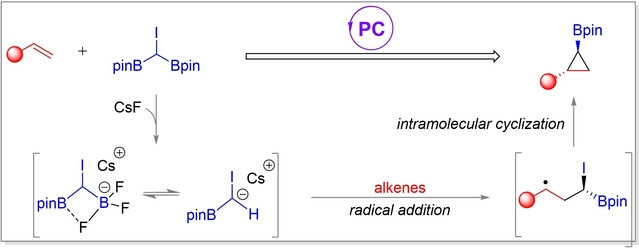
A stable, multifunctional (diboronmethyl)iodide reagent (CH(Bpin)2I) was synthesized for the photoinduced cyclopropanation of alkenes, providing an array of 1,2-substituted cyclopropylboronates. The transformation exhibits operational simplicity, broad substrate scope, excellent functional-group compatibility, high chemo- and diastereoselectivity, and practicality for the late-stage modification of complex molecules.
MOF Intersystem Crossing
Triplet Generation Through Singlet Fission in Metal-Organic Framework: An Alternative Route to Inefficient Singlet-Triplet Intersystem Crossing
- First Published: 31 July 2023

Singlet to triplet intersystem crossing can be inhibited in organic chromophore assemblies within crystalline porous MOFs due to a diminished Franck-Condon overlap between spatially disparate singlet (delocalized) and triplet (localized) wavefunctions. Singlet fission—occurring through an electron superexchange process—can be a viable route to achieve high-yield, low-energy triplets in framework-based energy conversion systems.
Light-Emitting Electrochemical Cells
Binuclear Copper(I) Complexes for Near-Infrared Light-Emitting Electrochemical Cells
- First Published: 22 June 2023
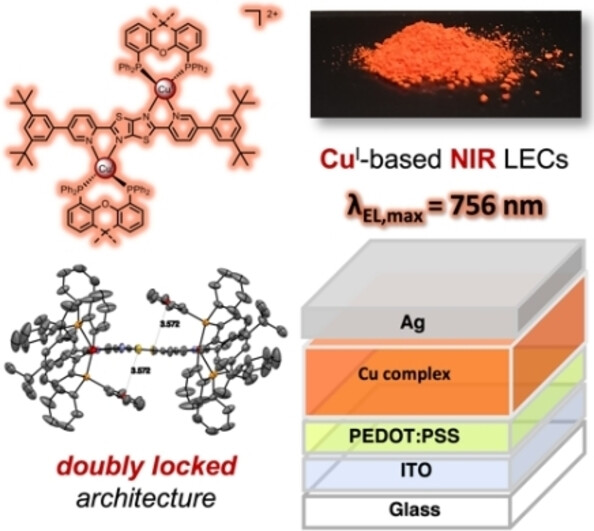
A series of near-infrared emitting (NIR) compounds based on earth-abundant binuclear CuI complexes is presented. Two π-stacking interactions are found in their solid-state structure yielding doubly locked architectures that help to suppress excited state flattening distortions and quenching. The complexes have been successfully used in light-emitting electrochemical cells (LECs), and unprecedented NIR electroluminescence (EL) with CuI compounds was achieved.
Artificial Metallonucleases | Hot Paper
Polarized Spectroscopy
An Artificial Intelligence Approach for Tackling Conformational Energy Uncertainties in Chiroptical Spectroscopies
- First Published: 19 June 2023

Chiroptical spectroscopies are key to determine the absolute configuration of solvated compounds. Their reliability critically depends on computed Boltzmann factors which are, however, intrinsically inaccurate. Combining a genetic algorithm and a hierarchical clustering analysis enables a major improvement of the analysis of chiroptical spectra and the reliability of the assignment.
Dual-Carbon Batteries
Large Interlayer Distance and Heteroatom-Doping of Graphite Provide New Insights into the Dual-Ion Storage Mechanism in Dual-Carbon Batteries
- First Published: 25 July 2023
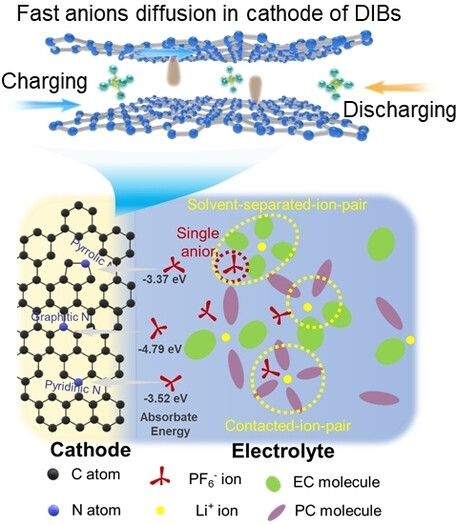
The cost and energy density of dual-ion batteries pose obstacles to their commercialization as large-scale energy storage devices. Here we address these issues by proposing a design strategy of graphite materials that involves a large interlayer distance and abundant doping of heteroatoms. This approach enables the realization of high-rate and high-capacity dual-ion batteries as well as dual-carbon batteries.
Nanozymes
Atomization-Induced High Intrinsic Activity of a Biocompatible MgAl-LDH Supported Ru Single-Atom Nanozyme for Efficient Radicals Scavenging
- First Published: 23 July 2023
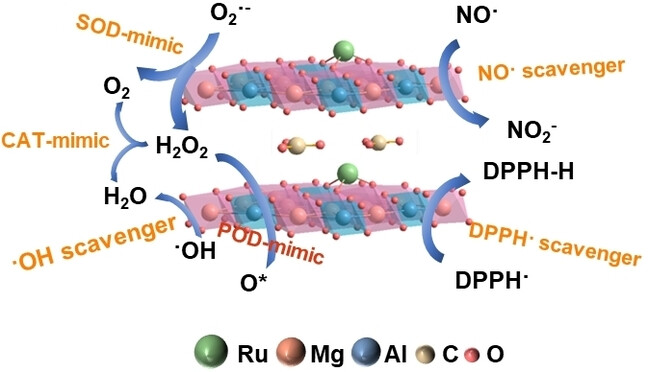
A biocompatible MgAl-layered double hydroxide (LDH) supported Ru single-atom nanozyme (Ru1/LDH SAE) was developed to mimic multi-enzymes. Ru1/LDH SAE shows high intrinsic peroxidase-like catalytic activity, which outperforms the Ru nanoclusters nanozyme by a factor of 20 and surpasses most SAEs reported so far.
Photoelectrochemical H2O Oxidation
Introducing Bidirectional Axial Coordination into BiVO4@Metal Phthalocyanine Core–Shell Photoanodes for Efficient Water Oxidation
- First Published: 24 July 2023
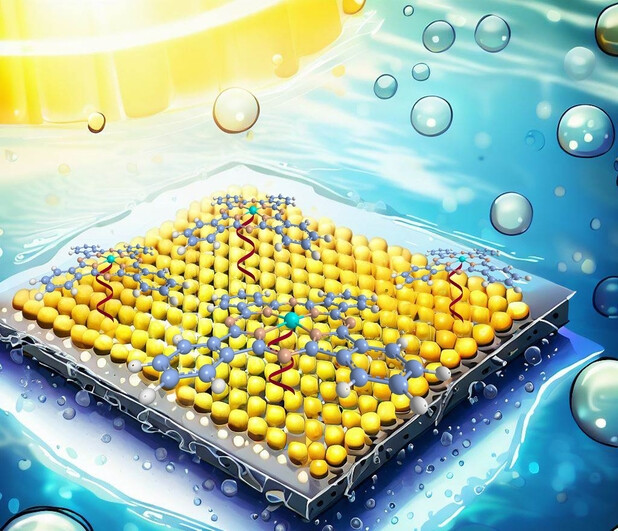
Pyrazine was adopted as axial coordination agent for the first time to construct core–shell BiVO4@metal polyphthalocyanine photoanode. The axial coordination of pyrazine facilitated the carrier transfer across the BiVO4 and metal phthalocyanine interface and endowed ZnCoFe polyphthalocyanine with lower Fe d band center and orbital spin, which improved the OER activity by promoting the *OOH desorption.
Biosensors | Hot Paper
A Rapid Sputum-based Lateral Flow Assay for Airway Eosinophilia using an RNA-cleaving DNAzyme Selected for Eosinophil Peroxidase
- First Published: 21 July 2023
Alkanes to Olefins | Hot Paper
Surface Chemistry and Catalytic Reactivity of Borocarbonitride in Oxidative Dehydrogenation of Propane
- First Published: 31 July 2023
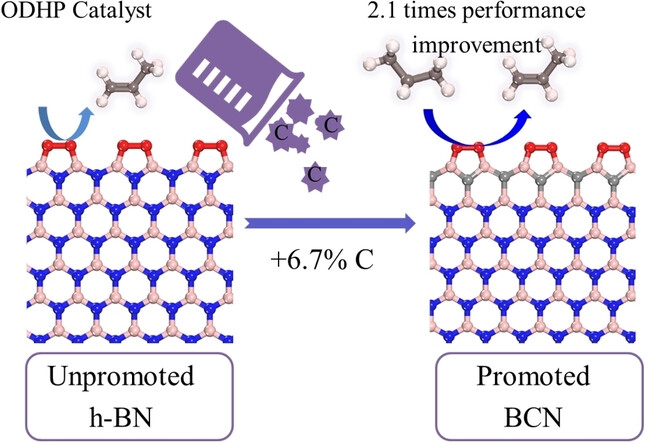
A suitable amount of carbon in h-BN catalyst effectively inhibits the excessive oxidation of BCN in the oxidative dehydrogenation of propane (ODHP). Density functional theory calculations show that the presence of dispersed rather than aggregated carbon atoms can affect the electronic microenvironment of h-BN to render a superior catalytic performance.
Chemistry in Electric Fields
Two-Way Catalysis in a Diels–Alder Reaction Limits Inhibition Induced by an External Electric Field
- First Published: 02 August 2023
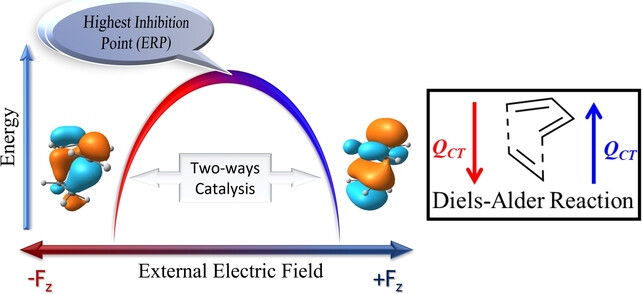
An oriented external electric field (EEF) catalyzes Diels–Alder reactions in one direction and inhibits them in the other. The inhibitory direction becomes rate-enhancing with increasing EEF. The EEF strength necessary to bring maximum inhibition is defined as the Electrostatic Resistance Point (ERP). ERP values gauge electrostatic interactions between substituents and external electrostatic stimuli.
Organic Electronics
Semiconducting Polymers Based on Simple Electron-Deficient Cyanated trans-1,3-Butadienes for Organic Field-Effect Transistors
- First Published: 31 July 2023
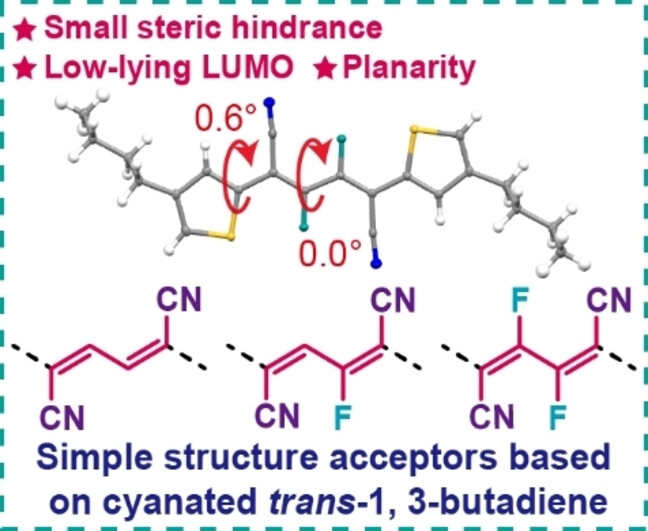
Sequentially introducing fluorine and cyano functionalities onto trans-1,3-butadiene has led to a series of structurally simple but highly electron-deficient building blocks for semiconducting polymers having unipolar n-type transport character with electron mobilities of >1 cm2 V−1 s−1 in organic field-effect transistors. The study offers inspiration for developing structurally simple electron-deficient units for high-performance n-type polymers.
Polymerization
Poly(Ethylene Piperidinium)s for Anion Exchange Membranes
- First Published: 31 July 2023
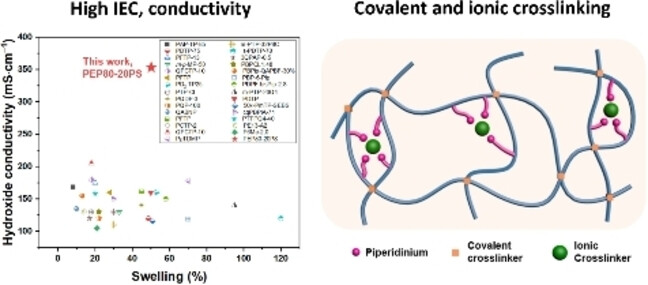
Ionic crosslinking is introduced into high-cationic-ratio AEMs to suppress high water uptake and swelling while further improving the hydroxide conductivity. This strategy limited the dimensional change and water uptake of the AEMs, with a high hydroxide conductivity observed. The chemical design used in this study presents a significant advancement toward developing AEMs showing high conductivity and stability simultaneously for fuel cell applications.
Heterogeneous Catalysis
Lithium Promotes Acetylide Formation on MgO During Methane Coupling Under Non-Oxidative Conditions
- First Published: 24 July 2023
Systems Chemistry | Hot Paper
Chemically Fueled Communication Along a Scaffolded Nanoscale Array of Squaramides
- First Published: 10 July 2023
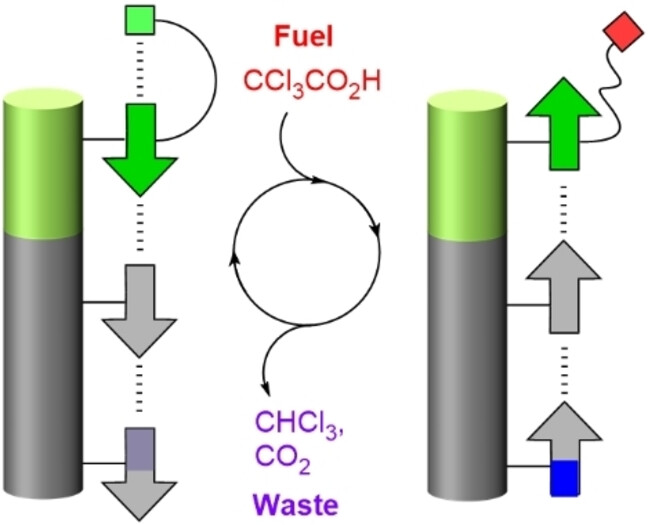
A two nanometer-long molecular device has been synthesised that contains a rigid rod - to provide structural definition - attached to a molecular relay that switches direction in response to an incoming signal. Like natural systems, it responds to temporal changes in a signal, exemplified by the consumption of a molecular fuel, changes that are transmitted down the device.
Biosynthesis
Discovering Dynamic Plant Enzyme Complexes in Yeast for Kratom Alkaloid Pathway Identification
- First Published: 07 August 2023
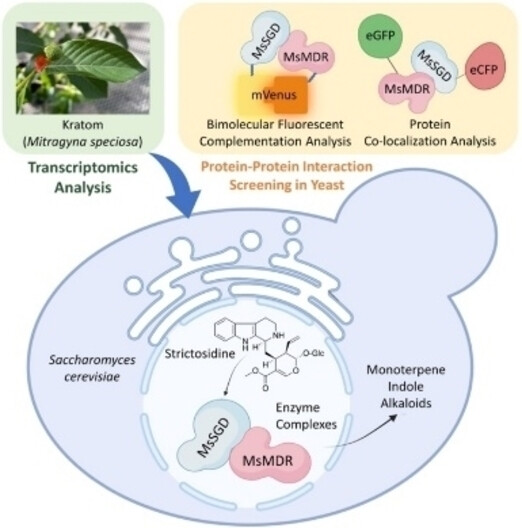
Yeast-based protein-protein interaction (PPI) screening identified dynamic enzyme complexes and biosynthetic pathways they organize from a rare plant, kratom. PPI screening identified four functional medium-chain dehydrogenases (MsMDRs) interacting with strictosidine β-D-glucosidase (MsSGD), leading to four novel pathway branches. This study highlights how leveraging post-translational regulation features can accelerate the discovery of biosynthetic pathways in plants.
Organic Solar Cells | Hot Paper
Terminally Chlorinated and Thiophene-linked Acceptor-Donor-Acceptor Structured 3D Acceptors with Versatile Processability for High-efficiency Organic Solar Cells
- First Published: 07 August 2023
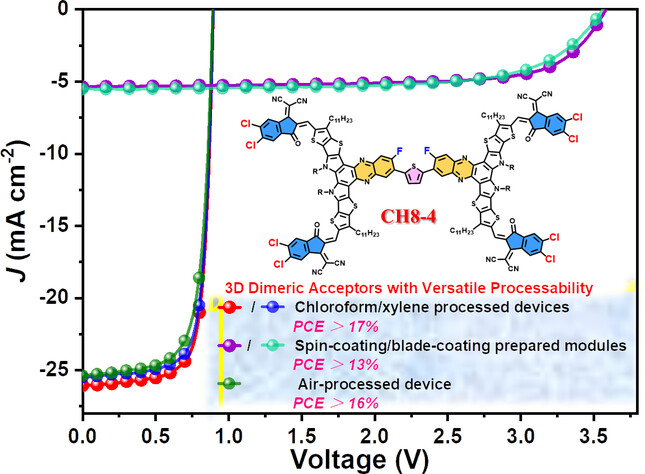
A series of terminally chlorinated and thiophene-linked three-dimensional (3D) dimerized acceptors were reported to explore the effect of chlorination by precisely tuning the position and number of chlorine atoms. The decent performance of PM6:CH8-4 on small-area devices, non-halogen solvent and air-processed devices, and 2.88 cm2 solar cell modules highlights the versatile processing capability of our 3D acceptors.
Asymmetric Catalysis | Hot Paper
Turning on Asymmetric Catalysis of Achiral Metal-Organic Frameworks by Imparting Chiral Microenvironment
- First Published: 08 August 2023
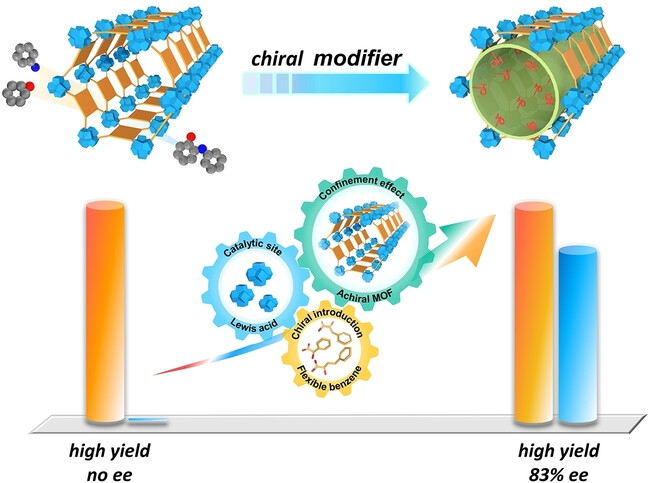
The chiral microenvironment around catalytically active metal clusters in a MOF, PCN-222(Cu), is created by simply grafting chiral molecules (R)−Cn−COOH (n=1, 2, 3). Owing to multi-level modulation such as hydrogen interaction, steric hindrance, and confinement effect caused by the microenvironment, the resulting (R)−Cn@PCN-222(Cu) exhibits high activity and enantioselectivity in the asymmetric ring-opening of cyclohexene oxide with aniline.
Li Metal Batteries
Anion-tethered Single Lithium-ion Conducting Polyelectrolytes through UV-induced Free Radical Polymerization for Improved Morphological Stability of Lithium Metal Anodes
- First Published: 07 August 2023

The ion transport kinetics, Li0 deposition behavior, and electrochemical performances of a dual-ion conducting polymer electrolyte and a single-ion conducting polyelectrolyte (SIC) were investigated. The SIC electrolyte showed improved Li+ transference number (0.85), uniform Li0 morphology, enhanced critical current density (2.4 mA/cm2), and durability of 4500 cycles in Li0-LiFePO4 battery.
Materials Science
Fluorine-Rich Supramolecular Nano-Container Crosslinked Hydrogel for Lithium Extraction with Super-High Capacity and Extreme Selectivity
- First Published: 20 July 2023
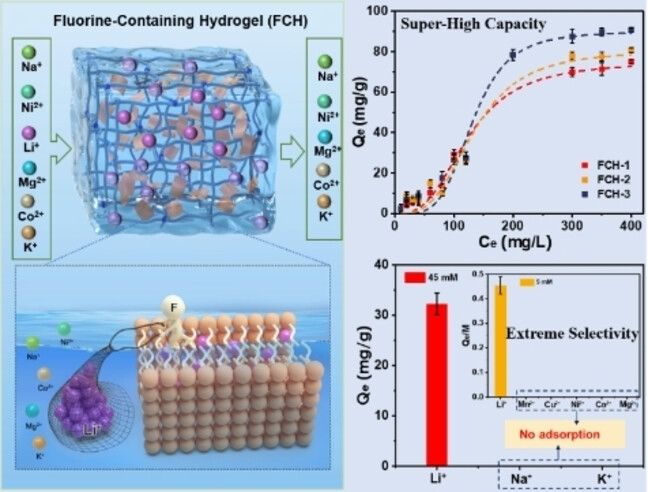
A robust fluorine-containing hydrogel was made by incorporating supramolecular nanosheets from fluorinated monomers in a one-pot polymerization. It shows a high lithium adsorption capacity (Qm Li+=122.3 mg g−1) and selectivity for Li+. Separation of Li+/Na+ in actual wastewater is achieved with a separation factor of 153.72. The recovery capability and Li+ selectivity are associated with specific coordination between lithium and fluorine.
Oxygen Evolution Reaction | Hot Paper
Low Ruthenium Content Confined on Boron Carbon Nitride as an Efficient and Stable Electrocatalyst for Acidic Oxygen Evolution Reaction
- First Published: 25 July 2023
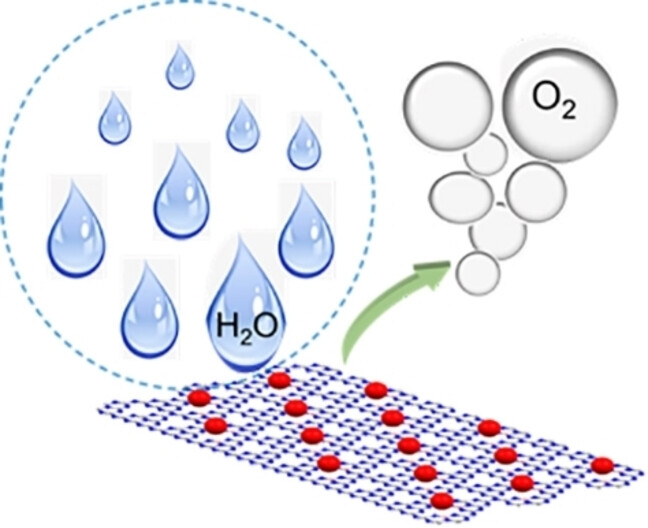
Ru nanoparticles immobilized on a stable boron carbon nitride (BCN) nanosheet support show excellent oxygen evolution reaction (OER) activity and stability. The coordination of introduced B and active N sites in BCN provides strong interaction between the Ru and the support, which facilitates Ru dispersity and promotes the catalyst's stability. Density functional theory (DFT) calculations reveal that the BCN support can reduce the OER energy barrier and change the adsorption capacity for intermediate products.
Electrocatalysis
Modulating Metal-Nitrogen Coupling in Anti-Perovskite Nitride via Cation Doping for Efficient Reduction of Nitrate to Ammonia
- First Published: 01 August 2023
Polymerization | Hot Paper
A Single-Crystal Monomer to Single-Crystal Polymer Reaction Activated by a Triplet Excimer in a Zipper Mechanism
- First Published: 02 August 2023
Reaction Screening | Hot Paper
High Throughput Multidimensional Kinetic Screening in Continuous Flow Reactors
- First Published: 03 August 2023

An automated high throughput platform is developed to screen polymerizations in multidimensions under well controlled and reproducible conditions. Via combining flow chemistry, machine automation and inline analysis, kinetic data libraries with very good accuracy (absolute error <4 %) were built with a large amount of data generated from the platform.
Soft Matter
Using Aggregation to Chaperone Nanoparticles Across Fluid Interfaces
- First Published: 28 July 2023

Capitalizing on the aggregation of NPs induces an unusual “single particle-aggregation-single particle” transfer process, which can be established through either ligand-exchange processes or electrostatic interactions. By introducing a jammed NP-polymer assembled layer at the liquid/liquid interface (LLI), the transfer process can be suppressed, opening a new strategy to manipulate the dispersion of nanoparticles in various liquid media.
Photocatalysis
Integrated Photochromic-Photothermal Processes for Catalytic Plastic Upcycling
- First Published: 01 August 2023
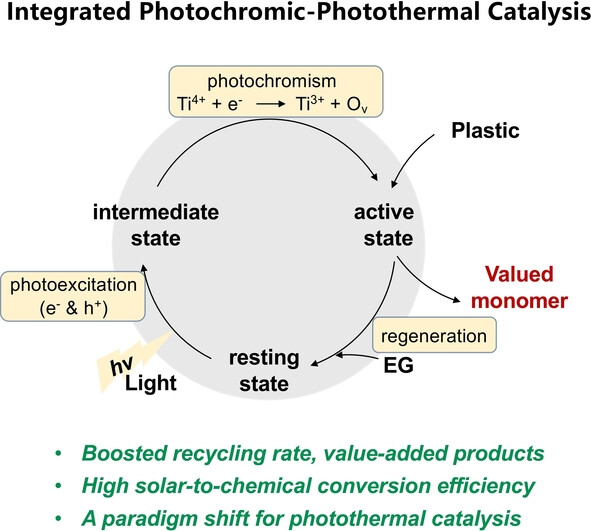
We surpass the limitation of the existing photothermal catalysis mechanism and propose a photochromic-photothermal catalytic system based on polyol-ligated TiO2 nanocrystals. Upon sunlight irradiation, the chemically bonded polyols capture holes generated by TiO2, enabling photogenerated electrons to reduce Ti4+ to Ti3+ and produce oxygen vacancies. This process boosts photothermal efficiency and facilitates polyester glycolysis efficiency.
Biocorrosion Mechanisms
Accelerated Microbial Corrosion by Magnetite and Electrically Conductive Pili through Direct Fe0-to-Microbe Electron Transfer
- First Published: 01 August 2023
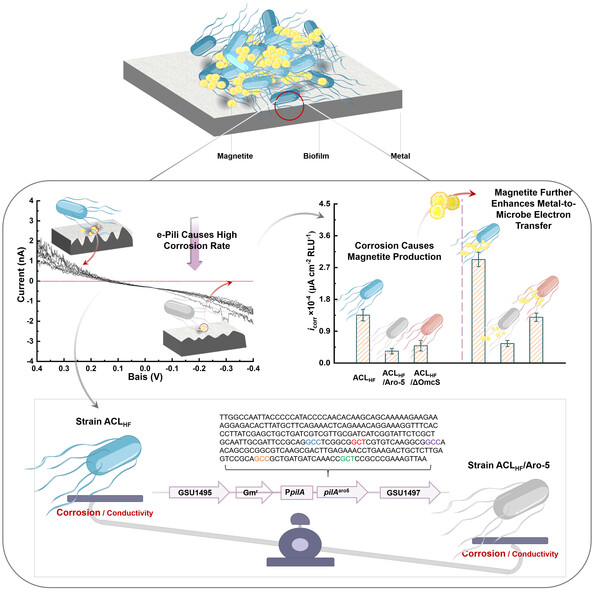
Electrically conductive pili (e-pili) and magnetite facilitate Geobacter sulfurreducens electron uptake from metallic iron. The complex interactions between e-pili, cytochromes, and magnetite are actively researched in electrobiocorrosion. Magnetite, a common corrosion product, enhances electrobiocorrosion through a positive feedback loop. It reduces the need for cells to create electrical contacts, leading to high corrosion rate.
Nanomaterials | Very Important Paper
Electric-Field-Induced Alignment of Functionalized Carbon Nanotubes Inside Thermally Conductive Liquid Crystalline Polyimide Composite Films
- First Published: 07 August 2023

The positive liquid crystalline material, 4′-heptyl-4-biphenylcarbonitrile (7CB) is used to functionalize carbon nanotubes (LC-CNT), which can be aligned in the liquid crystalline polyimide (LC-PI) matrix under an alternating electric field to fabricate the thermally conductive LC-CNT/LC-PI composite films. The oriented alignment of LC-CNT in the LC-PI matrix realizes the efficient construction of thermal conduction pathways with low amount of LC-CNT.
Lithium-Sulfur Batteries | Hot Paper
A Radical Pathway and Stabilized Li Anode Enabled by Halide Quaternary Ammonium Electrolyte Additives for Lithium-Sulfur Batteries
- First Published: 01 August 2023

The tetrapropylammonium bromide (T3Br) additive in a Li−S electrolyte can trigger the S3.− radical pathway, which not only enhances the sulfur redox kinetics but also results in a 3D Li2S nucleation. In addition, the T3Br additive weakens the solvation structure of Li+ and creates a LiF-rich solid electrolyte interface on Li anode.
Polymer Recycling | Hot Paper
Solvent-Free Chemical Recycling of Polymethacrylates made by ATRP and RAFT polymerization: High-Yielding Depolymerization at Low Temperatures
- First Published: 31 July 2023
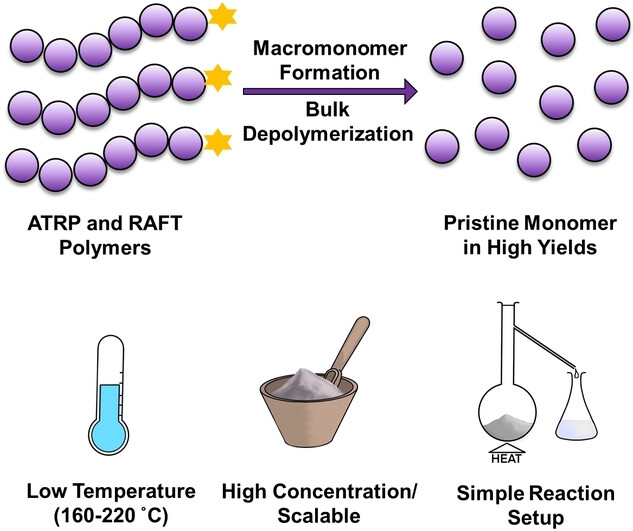
A low temperature and solvent-free method to depolymerize polymers made by ATRP and RAFT is reported. By performing an efficient end-group modification, the modified polymers were subsequently successfully depolymerized, resulting in up to 90 % monomer regeneration at temperatures as low as 220 °C. Importantly, the process was scalable and the monomer produced had high purity and could subsequently be used to make a new batch of polymer.
Organic Chemistry
Stereodivergent Zweifel Olefination and its Mechanistic Dichotomy
- First Published: 26 July 2023
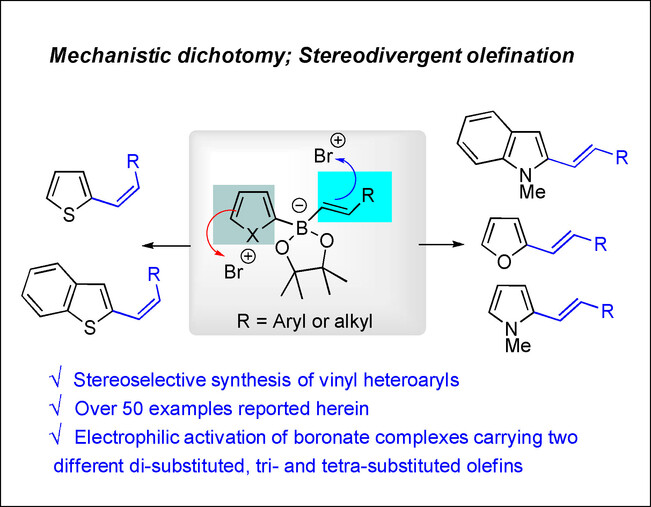
The mechanistic dichotomy in Zweifel olefination using boronate complexes carrying two different reactive π-systems is explored herein. The synthesis of vinyl heteroarenes and 1,3-dienes with up to 100 % stereoselectivity is demonstrated. A DFT calculations study allowed to highlight the mechanistic dichotomy in the stereoselective formation of E vs. Z-vinyl heteroarenes using different heteroarenes.
Raman Spectroscopy | Hot Paper
Plasmon-Induced Charge Transfer-Enhanced Raman Scattering on a Semiconductor: Toward Amplification-Free Quantification of SARS-CoV-2
- First Published: 09 August 2023
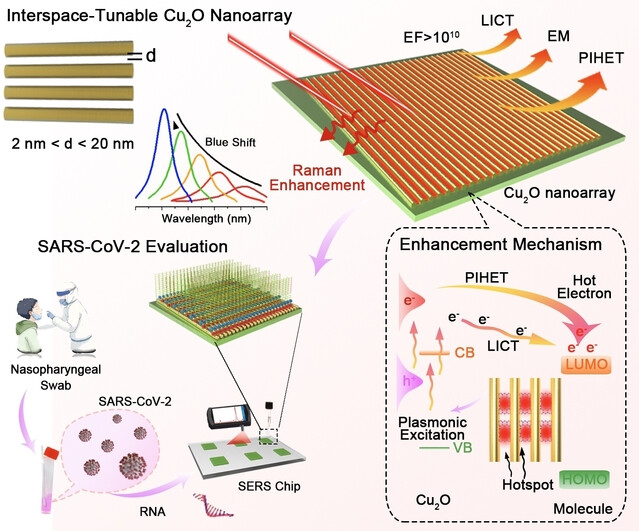
A Cu2O nanoarray with a significant enhancement factor of 3.19×1010 was developed as a highly sensitive and selective surface-enhanced Raman scattering device for the amplification-free SARS-CoV-2 RNA testing. The nanoarray chip has a low detection limit for the virus, down to 60 copies/mL within 5 min, which also enabled rapid and sensitive point-of-care quantification of other emerging virus variants.
Helicenes
Dinor[7]helicene and Beyond: Divergent Synthesis of Chiral Diradicaloids with Variable Open-Shell Character
- First Published: 14 July 2023
![Dinor[7]helicene and Beyond: Divergent Synthesis of Chiral Diradicaloids with Variable Open-Shell Character](/cms/asset/4806cb46-fff2-4595-8eb7-db55358910ea/anie202309238-toc-0001-m.jpg)
One starting material, two ring-forming steps, and three fusion patterns. A sequence of electrophilic cyclizations enables the first synthesis of dinor[7]helicene, a configurationally stable, redox-active diradicaloid analogue of [7]helicene. Strain-induced rearrangements of larger aromatic precursors provide access to non-benzenoid bis-helicenes, whose open-shell character depends on the connectivity between spin centers.
Solar Cells | Hot Paper
Two-Second-Annealed 2D/3D Perovskite Films with Graded Energy Funnels and Toughened Heterointerfaces for Efficient and Durable Solar Cells
- First Published: 04 August 2023
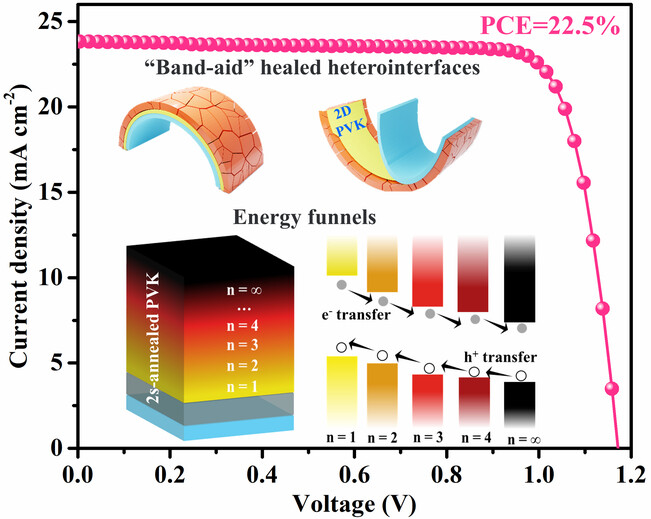
Introduction of binary additives leads to 2D/3D perovskites with gradient phase distribution and favorable energy funnels, which were constructed to facilitate charge transfer across the devices. The 2D components serve as a “band-aid” to heal the defects and toughen the buried heterointerfaces, yielding an efficiency of 22.5 % for fast-annealed perovskite solar cells.
Organic Light-Emitting Diodes | Hot Paper
Mild Synthesis of Polychlorinated Arenes for Efficient Organic Light-emitting Diodes with Dual Thermally Activated Delayed Fluorescence
- First Published: 27 July 2023
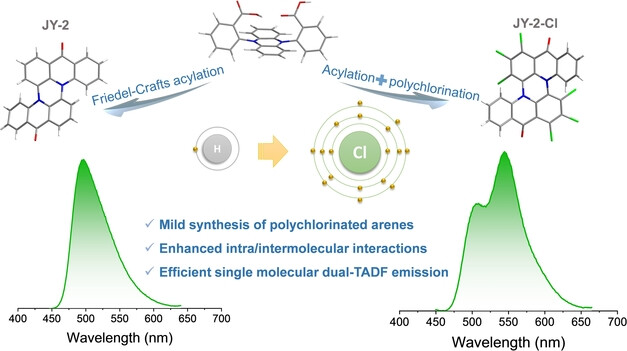
A mild and direct method has been developed to synthesize polychlorinated heteroatom polycyclic aromatic hydrocarbons through an intermediate electron donor-acceptor complex. The developed polychlorinated emitter could act as a dual thermally activated delayed fluorescence organic light-emitting diode as a result of the enhanced π–π interactions of the chlorine atoms.
CO2 Photoreduction
Electronic Interactions on Platinum/(Metal-Oxide)-Based Photocatalysts Boost Selective Photoreduction of CO2 to CH4
- First Published: 31 July 2023
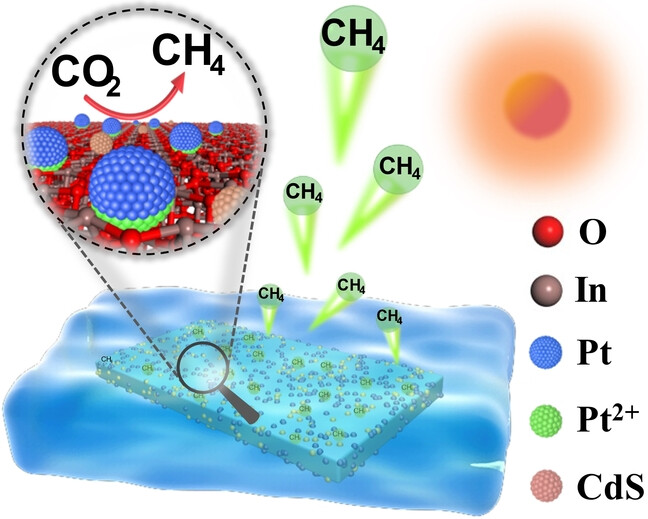
Selective photoreduction of CO2 to CH4, with a CH4 selectivity of 100 %, is achieved on a CdS/Pt/In2O3 photocatalyst. Electronic Pt−In2O3 interactions are beneficial for charge separation and CO2 conversion to CO2δ−, which can be easily hydrogenated into CH4. The enhancement effect of electronic Pt-(metal-oxide) interactions on selective photoreduction of CO2 to CH4 may extend to other common Pt/(metal-oxide)-based photocatalysts.
Rechargeable Zinc Batteries | Hot Paper
NH4+ Charge Carrier Coordinated H-Bonded Organic Small Molecule for Fast and Superstable Rechargeable Zinc Batteries
- First Published: 28 July 2023
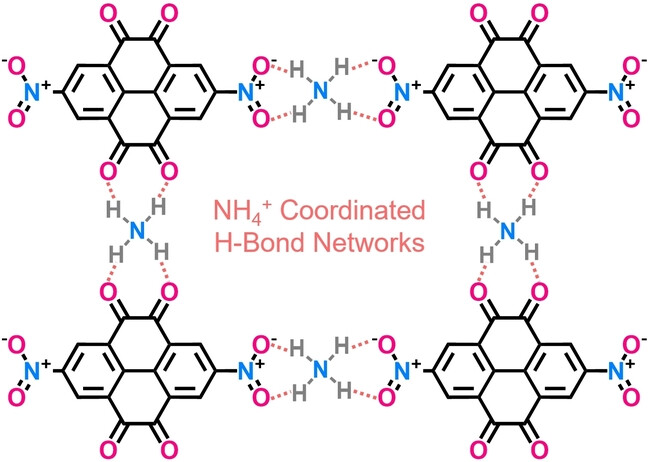
Ultrastable lock-and-key H-bonding networks between octuple-active 2, 7-dinitropyrene-4, 5, 9, 10-tetraone and tetrahedral NH4+ charge carrier are designed, which conquers its stability barrier in aqueous electrolyte and achieves fast diffusion kinetics of non-metallic charge carrier. A unique two-step four-electron NH4+ coordination mechanism brings the Zn-organic battery high capacity, superior rate capability and superstable cyclability.
Nanoparticles
Efficient Synthesis of Hydrolytically Degradable Block Copolymer Nanoparticles via Reverse Sequence Polymerization-Induced Self-Assembly in Aqueous Media
- First Published: 31 July 2023

Hydrolytically degradable block copolymer nanoparticles are prepared via reverse sequence polymerization-induced self-assembly (PISA) in aqueous media. This one-pot protocol involves reversible addition-fragmentation chain transfer (RAFT) polymerization of N,N′-dimethylacrylamide (DMAC) using a monofunctional or bifunctional trithiocarbonate-capped poly(ϵ-caprolactone) (PCL) precursor; DMAC monomer initially acts as a co-solvent to solubilize the hydrophobic PCL chains.
Zinc-Ion Supercapacitors | Very Important Paper
Reconstructing Hydrogen Bond Network Enables High Voltage Aqueous Zinc-Ion Supercapacitors
- First Published: 07 August 2023
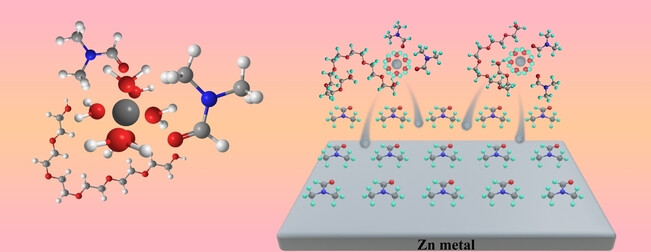
A new aqueous hybrid high-pressure electrolyte has been developed by incorporating DMF and PEG400 as co-solvents, enabling the reconfiguration of hydrogen bonding networks in water and control over the interfacial transfer processes. This electrolyte exhibits a wider electrochemical stability window, significantly enhancing the stability and cycling lifespan of assembled zinc ion supercapacitors under high pressure.
Polymer Electrolytes
Efficiencies of Various in situ Polymerizations of Liquid Electrolytes and the Practical Implications for Quasi Solid-state Batteries
- First Published: 25 July 2023

Two types of polymerizations, double bond radical polymerization and ring-opening polymerization, were investigated under various polymerization conditions. The effects on monomer conversion, Li+-conductivity and interfacial stability show that the double bond radical polymerization is more suitable for the in situ solidification of electrolytes.
Covalent Organic Frameworks
Thiophene-Containing Covalent Organic Frameworks for Overall Photocatalytic H2O2 Synthesis in Water and Seawater
- First Published: 01 August 2023
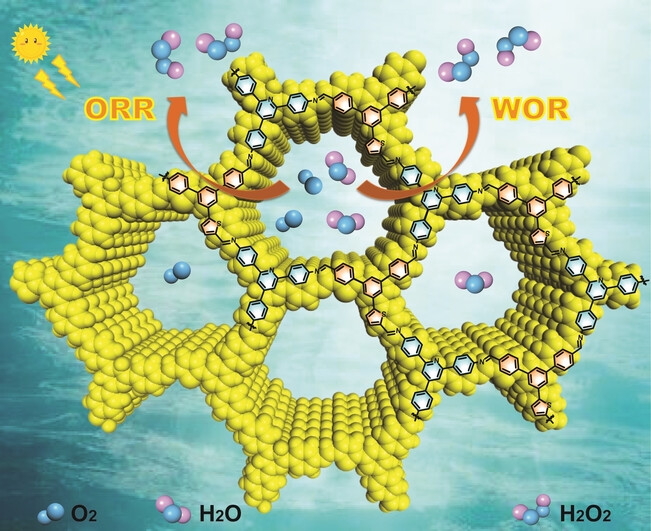
Two thiophene-containing covalent organic frameworks were constructed, which enabled overall photocatalytic H2O2 synthesis with high production yields in the absence of sacrificial agents. A synergistic oxygen reduction reaction (ORR) and water oxidation reaction (WOR) occurred under visible light in water and seawater to produce H2O2.
Radical Reactions
Photoredox-Catalyzed Decarboxylative Bromination, Chlorination and Thiocyanation Using Inorganic Salts
- First Published: 31 July 2023

Decarboxylative halogenation typically requires stoichiometric strong oxidants or electrophilic halogenating agents. It is now shown that simple inorganic halide salts can be used for halogenation of N-hydroxyphthalimide-activated carboxylic acids under visible-light photoredox catalysis. Halodecarboxylation proceeded with LiBr and LiCl, and the generality of the conditions was demonstrated by extension to decarboxylative thiocyanation with KSCN.
Theranostics | Hot Paper
“Dual-Key-and-Lock” NIR-II NSCyanines Enable High-Contrast Activatable Phototheranostics in Extrahepatic Diseases
- First Published: 09 August 2023
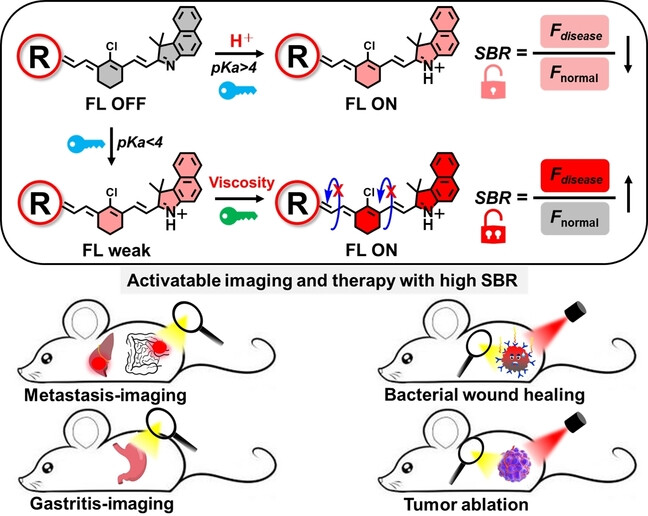
“Dual-key-and-lock” NIR-II NSCyanine dyes have been developed by harnessing a non-symmetric strategy, which enables activatable liver imaging and therapy with high signal-to-background ratio in extrahepatic diseases, including metastasis-imaging, acute gastritis-imaging, bacteria infected wound healing, and tumor ablation via combined photothermal therapy and chemotherapy.
Covalent Organic Frameworks | Hot Paper
Mixed-metal Ionothermal Synthesis of Metallophthalocyanine Covalent Organic Frameworks for CO2 Capture and Conversion
- First Published: 02 August 2023

We present efficient synthesis of metallophthalocyanine covalent organic frameworks (COFs) under mixed-metal ionothermal conditions starting from aryl cyanides. These conjugated COFs followed the Irving–Williams series in terms of their metal content, surface areas and pore volumes, thus offering a versatile and highly tunable platform to synthesize various COFs, and showed highly competitive CO2 capture and conversion properties.
Organocatalysis
Forging Medium Rings via I(I)/I(III)-Catalyzed Diene Carbofunctionalization
- First Published: 02 August 2023

An I(I)/I(III) catalysis-based strategy to access 8-membered carbocycles via the direct carbofunctionalization of 2-phenethyl-substituted 1,3-dienes is disclosed. This strategy to generate densely functionalized, fluorinated benzocyclooctenes is modular and through changes in the oxidation/activation regime and the external nucleophile, the challenging cyclization can be merged with formation of allylic C−O, C−N, and C−C bonds (>30 examples).
Electrocatalytic Oxygen Reduction
Constructing Fe-N4 Sites through Anion Exchange-mediated Transformation of Fe Coordination Environments in Hierarchical Carbon Support for Efficient Oxygen Reduction
- First Published: 04 August 2023
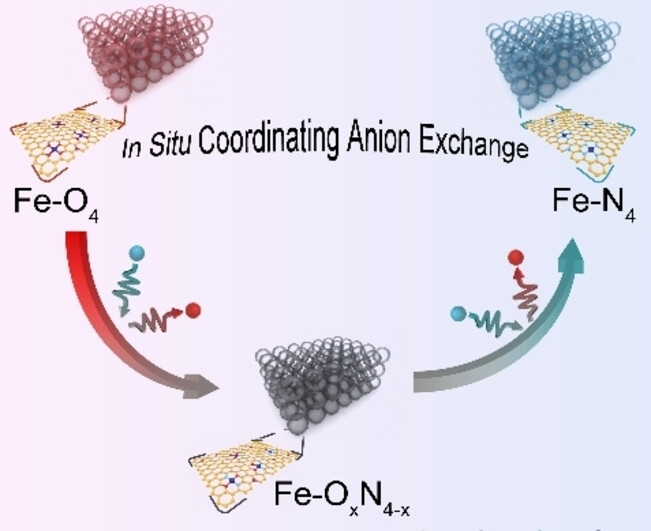
Fe-N4 sites in hierarchical carbon support composed of hollow carbon spheres (Fe-SA/N-HCS) are obtained by a demonstrated in situ anion exchange process, during which the coordinating O atoms in Fe-O4 configuration are substituted by N atoms. The distinct strategy produces a large quantity of electrochemically accessible Fe-N4 sites. Thus, Fe-SA/N-HCS is an outstanding electrocatalyst for oxygen reduction reaction and Zn-air batteries.
Zinc Metal Batteries
Solvation Modulation Enhances Anion-Derived Solid Electrolyte Interphase for Deep Cycling of Aqueous Zinc Metal Batteries
- First Published: 31 July 2023
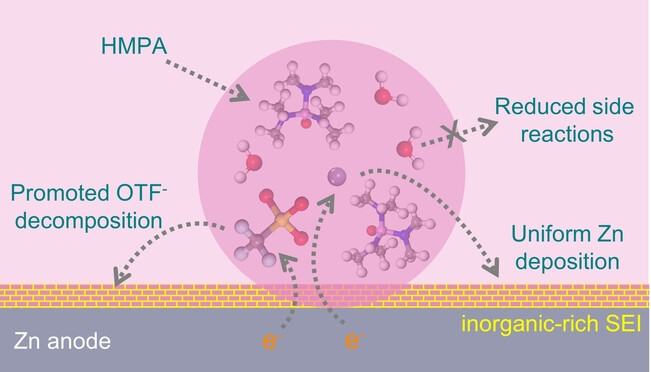
Hexamethylphosphoric triamide (HMPA) is reported as an electrolyte additive to achieve deep cycling of Zn anodes. HMPA reshapes the solvation structures and promotes anion (OTF−) decomposition, which in situ forms an inorganic-rich solid-electrolyte interphase. More interestingly, this anion decomposition does not involve HMPA, which is beneficial for its long-term impact on the electrolyte.
Cryopreservation
Strong Inhibition of Ice Growth by Biomimetic Crowding Coacervates
- First Published: 03 August 2023

To mimetic the membrane-less organelles inside cells, we fabricated coacervates consisting of various components. It is firstly discovered that the crowding coacervates exhibit strong ice growth inhibition activity. It opens a completely new avenue to design ice-controlling materials for the cryopreservation of biological samples and may provide new insights into the survival of freezing-tolerant organisms.
Bioorganic Chemistry | Hot Paper
A TriPPPro-Nucleotide Reporter with Optimized Cell-Permeable Dyes for Metabolic Labeling of Cellular and Viral DNA in Living Cells
- First Published: 12 July 2023
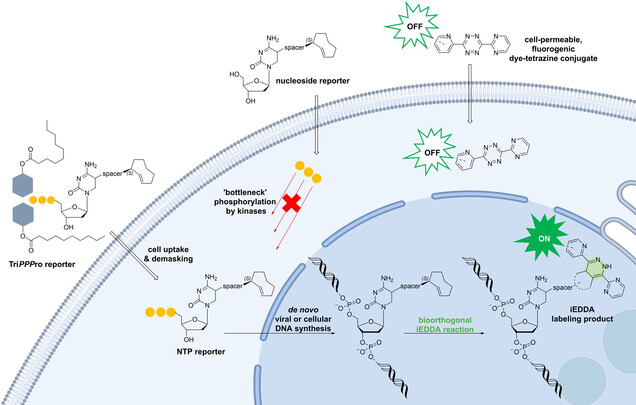
The TriPPPro approach facilitates live-cell imaging of metabolically labeled cellular and viral DNA. The pronucleotide of a modified 2′-deoxycytidine triphosphate allows the incorporation of the fast bioorthogonal 2TCOa label belonging to the iEDDA repertoire. Subsequent staining of the tagged DNA with highly reactive dye-tetrazine conjugates within minutes to hours after dye addition enables the visualization of nucleic acids in real time.
Communications
Polycyclic Hydrocarbons
Fused Indacene Dimers
- First Published: 30 June 2023
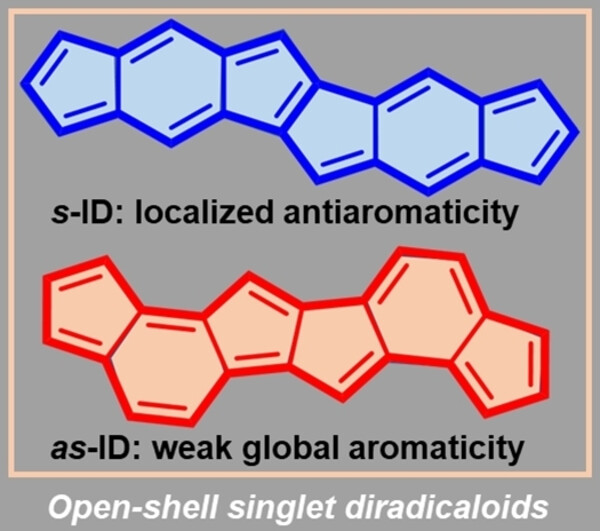
Two fused indacene dimer isomers (s-ID and as-ID) have been synthesized and isolated in single-crystal form. They both display an open-shell singlet ground state. s-ID has localized antiaromaticity on the s-indacene units, while as-ID shows weak global aromaticity. Additionally, as-ID has a larger diradical character and a smaller singlet-triplet gap as compared to s-ID.
Molecular Electrocatalysis
Coordination Tuning of Metal Porphyrins for Improved Oxygen Evolution Reaction
- First Published: 07 August 2023
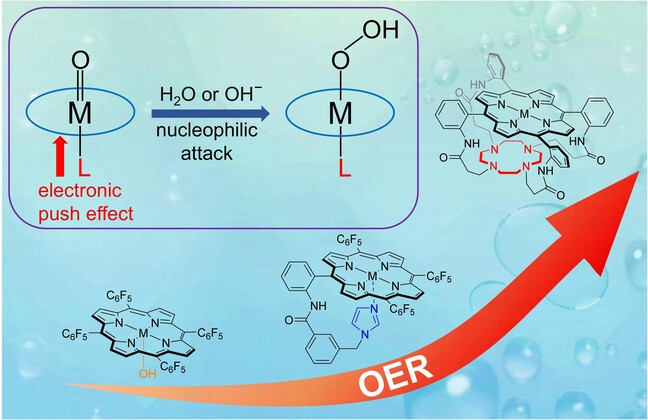
Metal porphyrins with a coordinatively unsaturated metal ion are designed for improved O2 evolution catalysis. By sterically protecting one porphyrin side with a cyclen, five-coordinate metal-oxo with an unoccupied trans axial site is proposed to be produced in O2 evolution. Theoretical studies showed that this five-coordinate structure enables more positively charged metal-oxo units, which is favoured for nucleophilic attack to form O−O bonds.
Biotransformations
Biocompatible α-Methylenation of Metabolic Butyraldehyde in Living Bacteria
- First Published: 21 July 2023

Introducing new abiotic chemistry into living cells is a grand challenge in the field of chemical biotechnology. Here, we show that phosphate and/or biogenic amines mediate the non-enzymatic α-methylenation of butyraldehyde under biocompatible reaction conditions and can be interfaced with butyraldehyde biosynthesis from D-glucose in the bacterium Escherichia coli.
Nucleotides
Real-time Imaging of Nascent DNA in Live Cells by Monitoring the Fluorescence Lifetime of DNA-Incorporated Thiazole Orange-Modified Nucleotides
- First Published: 27 July 2023

A 2′-deoxycytidine triphosphate (dCTP) nucleotide modified with a thiazole orange moiety shows different fluorescence lifetimes in living cells depending on whether it is present as a free triphosphate or as a DNA-incorporated nucleotide. Due to this unique property, DNA synthesis in live cells can be monitored in real time using fluorescence lifetime imaging microscopy.
Ethanol Oxidation Reaction
Accelerating Ethanol Complete Electrooxidation via Introducing Ethylene as the Precursor for the C−C Bond Splitting
- First Published: 07 August 2023
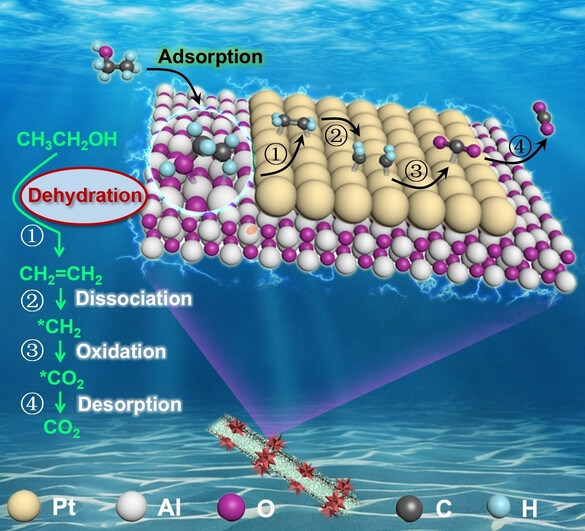
A unique ethylene-mediated pathway with a 100 % C1-selectivity for ethanol oxidation reaction (EOR) is proposed for the first time based on a well-structured Pt/Al2O3@TiAl catalyst, in which Al2O3 is responsible for generating ethylene from ethanol dehydration while Pt boosts the complete oxidation of ethylene to CO2.
Supramolecular Chemistry | Very Important Paper
Chiroptical Amplification of Induced Circularly Polarized Luminescence in Nucleotide-Templated Supramolecular Polymer
- First Published: 03 August 2023
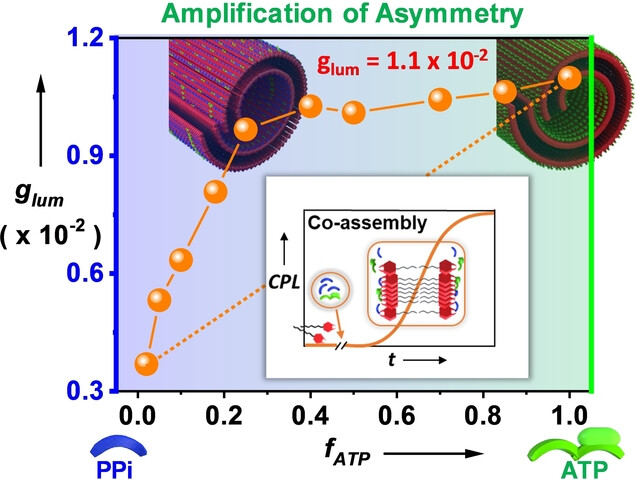
An unprecedented bioinspired, chiroptical amplification of induced-circularly polarized luminescence (ICPL) is demonstrated in ATP-driven cooperative supramolecular polymers. Amplification of asymmetry is achieved using a mixture of ATP and achiral pyrophosphate (PPi) guests, whereas the high luminescence is ensured by the aggregation-induced emissive nature of the monomers.
Cooperative Catalysis
Coupling Titanium and Chromium Catalysis in a Reaction Network for the Reprogramming of [BH4]− as Electron Transfer and Hydrogen Atom Transfer Reagent for Radical Chemistry
- First Published: 29 July 2023
![Coupling Titanium and Chromium Catalysis in a Reaction Network for the Reprogramming of [BH4]− as Electron Transfer and Hydrogen Atom Transfer Reagent for Radical Chemistry](/cms/asset/3088d08d-a7f1-40fd-beb1-6ad68e71dcf5/anie202308680-toc-0001-m.jpg)
From catalytic cycles to a catalytic globe by efficient coupling of two earth-abundant metals titanium and chromium. Reprogramming the typical hydride character of borohydrides to a stepwise electron and H-atom transfer reagent allows epoxide reduction, C−C bond formation and regiodivergent epoxide opening in an unusual manner by avoiding SN2-type reactivity of [BH4]−. The readily available Li[BH4] is used as sole stoichiometric reagent.
Radical Reactions
Access to Trifluoromethylketones from Alkyl Bromides and Trifluoroacetic Anhydride by Photocatalysis
- First Published: 03 August 2023

Catalytic methods for direct access to aliphatic trifluoromethyl ketones from feedstocks remain underdeveloped, partially owing to the high reactivity and instability of the trifluoroacetyl radical. Reported herein is the photocatalytic synthesis of trifluoromethyl ketones from alkyl bromides and trifluoroacetic anhydride. The reaction features visible-light catalysis and halogen-atom transfer (XAT), followed by an enabling radical-radical cross-coupling of the alkyl radical with a stabilized trifluoroacetyl radical.
Heterogeneous Catalysis
H2-free Semi-hydrogenation of Butadiene by the Atomic Sieving Effect of Pd Membrane with Tree-like Pd Dendrites Array
- First Published: 03 August 2023

Hydrogen atomic sieving of Pd-based membrane under electrochemical condition was developed for solving the challenges of high energy consumption and safety hazards of the conventional thermocatalytic selective hydrogenation route. The Pd membrane with an array of tree-like Pd nanodendrites as the core device in the developed continuous flow reactor exhibits superior catalytic performance, with an elimination of extra impurities for a high industrial applicability.
Artificial Cells | Hot Paper
Inter-Vesicle Signal Transduction Using a Photo-Responsive Zinc Ionophore
- First Published: 27 July 2023
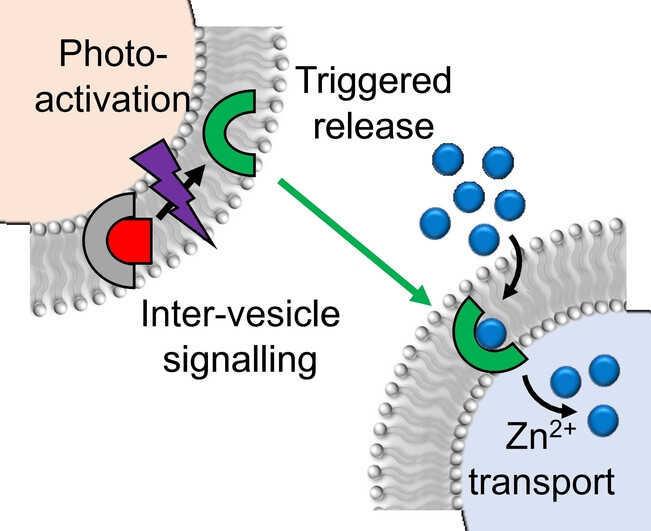
A synthetic inter-vesicle signalling system is reported in which diffusible chemical signals trigger transmembrane ion transport. Photo-activation of caged ZnII transporters triggers their release from one population of vesicles and the activation of transport in another remote population of vesicles leading to overall inter-vesicle signal transduction and amplification.
Rotaxanes
An Inorganic Click Reaction for the Synthesis of Interlocked Molecules
- First Published: 14 July 2023
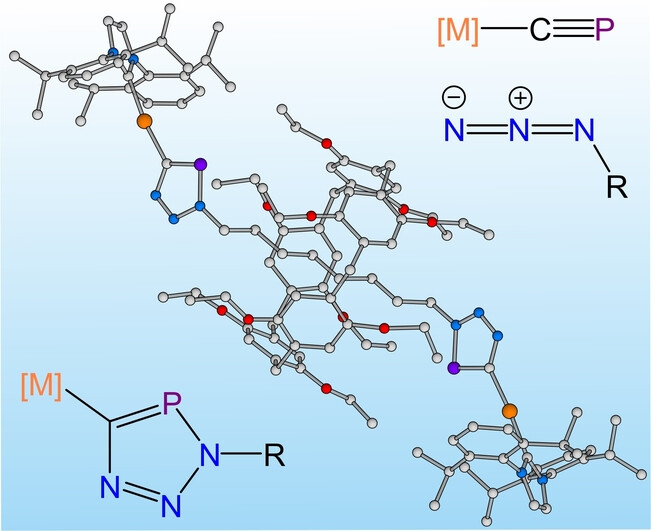
A quantitative inorganic click reaction that proceeds in solution in the absence of a catalyst has been used as a stoppering strategy for the synthesis of interlocked molecules in good yields (ca. 65 %). The resulting organometallic rotaxanes are air- and moisture-stable and can be purified by column chromatography under aerobic conditions.
Enantioselective Catalysis | Hot Paper
Asymmetric Dearomatization of Phenols via Ligand-Enabled Cooperative Gold Catalysis
- First Published: 28 July 2023
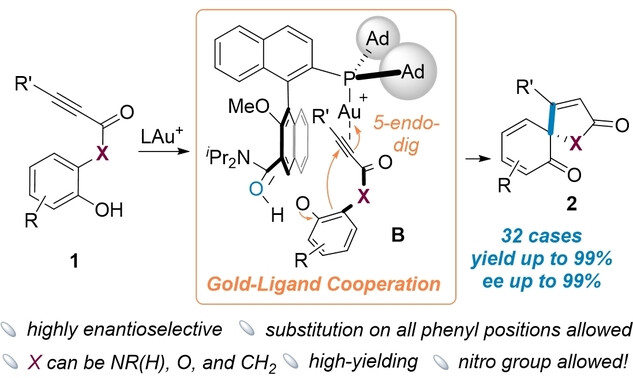
Asymmetric dearomatization of phenols was achieved by employing chiral bifunctional phosphine ligands in cooperative gold catalysis. This transformation demonstrated a remarkable generality, affording the desired product with high yields (up to 99 %) and excellent enantioselectivities (ee up to 99 %).
Solar Energy Storage
Bis- and Tris-norbornadienes with High Energy Densities for Efficient Molecular Solar Thermal Energy Storage
- First Published: 28 July 2023
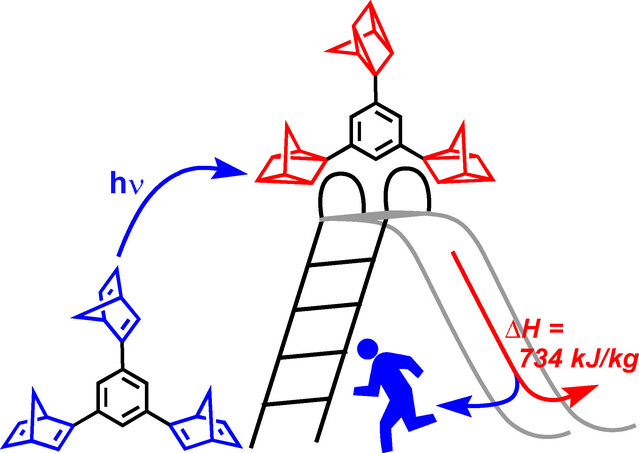
In search for novel efficient energy storage systems, aryl-linked bis- and tris-norbornadienes were synthesized with promising potential for molecular solar thermal energy storage (MOST) applications. Above all, the assembly of three quadricyclane units in one benzene derivative resulted in a material with exeptionally high energy densities of up to 734 kJ/kg.
Electrochemistry
eHydrogenation: Hydrogen-free Electrochemical Hydrogenation
- First Published: 04 August 2023

Electrochemically generated diimide using hydrazine hydrate offers a rapid and practical method to access alkanes and amines through the eHydrogenation of alkenes, alkynes, and nitro and azido groups. A wide range of substrates are reduced in high yields. The anodic transformation displays an excellent functional group tolerance, allowing for the late-stage reduction of biologically relevant compounds.
Molecular Recognition
Experimental Quantification of Halogen⋅⋅⋅Arene van der Waals Contacts
- First Published: 20 July 2023
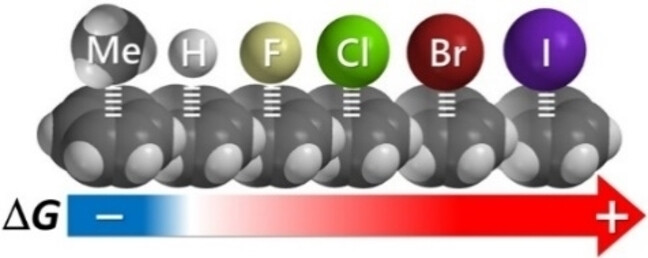
Halogen⋅⋅⋅arene interactions are measured in 17 different solvents using molecular balances. The Me⋅⋅⋅arene interaction was always found to be more favorable than any halogen⋅⋅⋅arene interaction. London dispersion interactions involving the larger, more polarizable halogen atoms are unable to outcompete the electrostatic and steric terms that determine the interaction energy trend.
Fluorescent Nanosheets
Tunable Fluorescence from 2D Assemblies of LnW10 and P2W18 Polyoxometalates Clusters with Quaternary Ammonium-type AIEgens
- First Published: 08 August 2023

Here, we synthesized a two-dimensional assembly by combining a quaternary ammonium-type AIE ligand and LnW10 or P2W18 POM clusters. The co-assembly of the two can be precisely regulated at the atomic scale. The morphology and fluorescence intensity of the SLNSs can be finely tuned. Moreover, SLNSs showed excellent solvent compatibility and emitted intensely in water, chloroform, and ethanol.
Electrochemical NO3− Reduction | Hot Paper
Interfacial Assembly of Nanocrystals on Nanofibers with Strong Interaction for Electrocatalytic Nitrate Reduction
- First Published: 07 August 2023
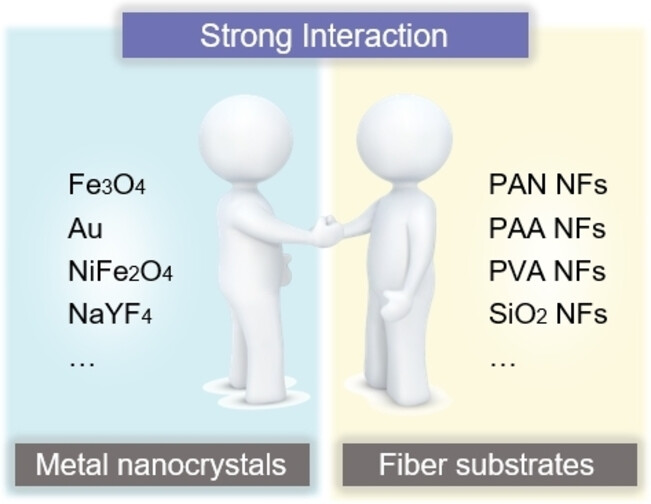
An interfacial assembly method to arrange metal nanocrystals on fiber substrates with strong interaction is demonstrated for optimized electrocatalytic performance. The obtained Fe/NFs assembly structure is proposed as an efficient electrocatalyst for nitrate reduction to N2, which achieves a high nitrate removal capacity of 2317 mg N/g Fe and N2 selectivity up to 97.2 %.




